Last updated on April 8, 2024
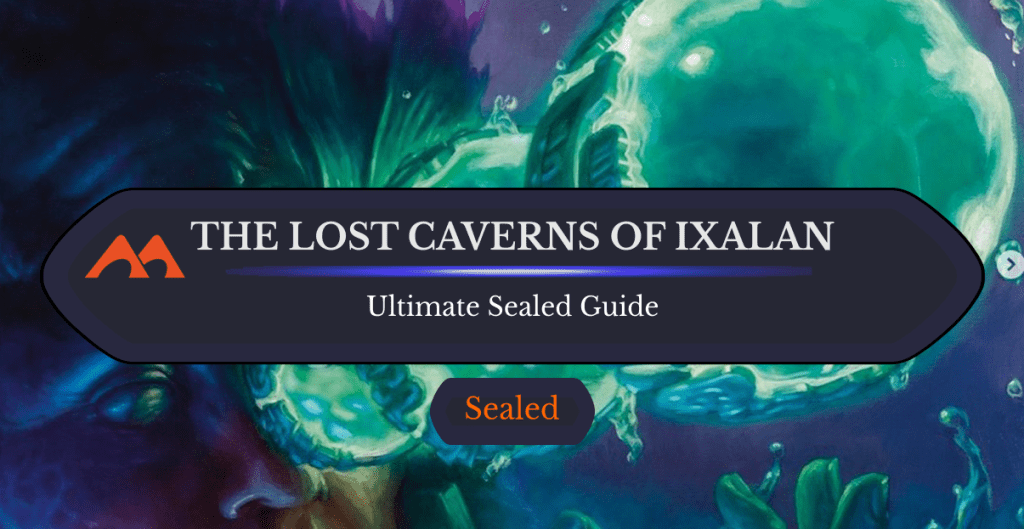
Sorcerous Spyglass | Illustration by Tyler Walpole
Greetings planeswalkers! You probably know the drill by now; new set, new Sealed guide. This article covers The Lost Caverns of Ixalan’s mechanics, archetypes, top commons, bombs, and more. And in two weeks, I’ll return to expand upon everything with another Draft guide.
I’d also encourage you to check out our Limited Set Review, which focuses more on individual cards.
Onto the guide!
Set Overview
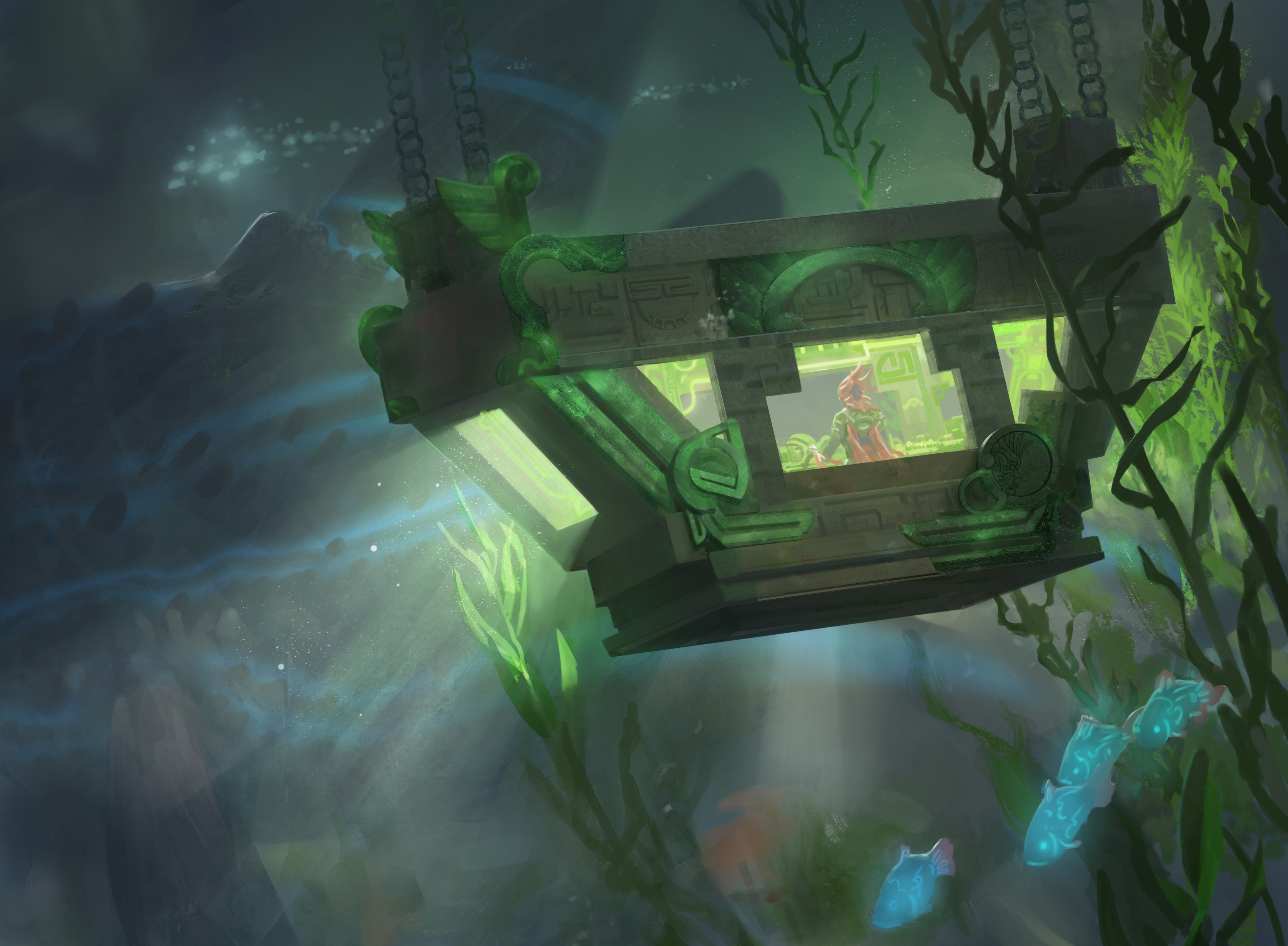
Watertight Gondola | Illustration by Artur Treffner
The Lost Caverns of Ixalan sees us taking a second trip to Ixalan after a six-year hiatus. There’s a twist this time; we’re going underground for an Ixalan-inspired riff on the underground world trope. The Lost Caverns shares Ixalan’s four key creature types (dinosaur, pirate, vampire, and merfolk), but focuses less on them and more on artifact/graveyard synergies. Caverns’ seems to be a more complex format than the original Ixalan, which was one of the simplest sets in recent memory. If you don’t believe me, check out how little text most of the set’s commons have!
I’m curious how fast this set is going to be, and honestly could see it being either fast or slow. The removal doesn’t seem to be the best, but there’s also a lot of durdling suggested by the set’s mechanics.
Mechanics
Craft
Craft is a new mechanic that appears on some artifacts in this set. These artifacts are double-faced cards that can be transformed by paying their craft cost (only as a sorcery). All craft costs involve paying some amount of mana and then exiling one or more cards of the required type(s) from your battlefield or graveyard.
Most craft cards ask to be crafted “with artifact”, but there are several exceptions. Craft appears in all colors but primarily in white and blue. It is also the focus of Azorius's () associated draft archetype, as you can see with Master's Guide-Mural.
What should you make of craft? When you break it down, most craft cards follow a simple formula:
- The initial artifact is usually an unassuming piece of cardboard, perhaps a cantrip or cheap removal spell like Idol of the Deep King.
- After the artifact refunds you the card you spent somehow, it’ll sit around waiting to be flipped.
- The ideal flip often involves paying with a card from your graveyard, but you’ll have other options like Treasure tokens, Map tokens, or even other craft artifacts.
- Craft backsides vary in power level; in some cases, the craft is more of a bonus (Tithing Blade), but for other cards flipping them is a major draw to including them in your deck (Throne of the Grim Captain).
Craft interacts with the set’s other mechanics, but since the overlap makes for a neat little puzzle, I’m not going to spoil it!
Transforming Double-Faced Cards
Lost Caverns also includes 16 other transforming double-faced cards that do not feature the new craft ability. Most of these are permanents that transform into powerful lands on their backside after some kind of condition has been achieved. Exceptions to this rule are the five new god cards (Aclazotz, Deepest Betrayal) and the Ojer cycle) and Huatli, Poet of Unity. The god cards flip into lands, but they feature this as a form of resilience against removal rather than a win condition. Meanwhile, Huatli, Poet of Unity is unique for flipping into the only saga in this set.
Descend
Descend is a new mechanic that describes “the act of putting a permanent card into a graveyard from anywhere”. With this in mind, here are some ways you can “descend” in a game of Magic:
- A nontoken creature of yours dies in combat
- A nontoken creature of yours is killed by a removal spell
- You sacrifice a nontoken creature
- You discard/cycle a permanent card
- You mill a permanent card
Descend does a lot of work in this set, acting essentially as several mechanics in one and propping up three different archetypes (, , and ). It also comes with two associated ability words worth mentioning.
The two new ability words are “descend X” and “fathomless descent”. Descend X refers to some kind of bonus/effect that happens if you have X or more permanent cards in your graveyard. The only X values that appear in this set though are “descend 4” and “descend 8”. Fathomless descent is similar, but uses the number of permanent cards in your graveyard as a value for some kind of card effect.
Descend is the primary driver of this set’s graveyard focus, and it has some interesting overlap with the other mechanics in the set. There are two primary paces for descend with different gameplay patterns:
- Pattern A is to focus on the act of descending itself, in order to repeatedly trigger cards like Child of the Volcano and Deep Goblin Skulltaker. This is Rakdos's () draft focus in this set, and it overlaps well with sacrifice/explore themes.
- Pattern B is to focus on filling up your graveyard with lots of permanents, preferably several at a time. Both Dimir () and Golgari () aim to do this to maximize their descend 4/8 payoffs.
Descend appears in every color in the set, but primarily in blue and black. White’s sole descend card is Ruin-Lurker Bat, while red and green get three cards each plus a handful of multicolor cards.
Discover
Discover is another new mechanic that seems to be an attempt by WotC to “fix” cascade. Rather than being a cast trigger, discover is a keyword action that comes with an X value. When you discover X, you exile cards from the top of your library until you exile a card with mana value X or less (the rest of the cards go to the bottom of your library in a random order). You may then cast that spell without paying its mana cost, or choose to put it into your hand.
Discover is a powerful but somewhat unreliable mechanic, as how much tempo you gain from it depends on luck. However, because it’s always at least “draw a card”, there’s significantly less pressure on you to avoid situational cards like counterspells and combat tricks (as you would with cascade). Discover appears mostly in red, but it shows up on a handful of cards in every other color, on artifacts, and on a cycle of common lands (Hidden Courtyard).
Explore
Explore is a returning mechanic that you might fondly remember from Ixalan. To recap, creatures you control “explore” and cause you to reveal the top card of your library. If it’s a land, you draw it. If it’s a nonland, you put a +1/+1 counter on that creature and then may choose to keep it on top or put it into your graveyard.
Explore is a strong value mechanic that either draws you cards or gives you card selection and sizing. It mostly appears in green and blue, though there are a handful of other cards that explore (Kinjalli's Dawnrunner, Miner's Guidewing and Defossilize). Nicanzil, Current Conductor shows off that Simic's () Draft archetype in this set focuses on this mechanic.
Map tokens are a new kind of artifact token that occupies a similar space to Clues, Food, and Treasure. All Maps have “1, tap: Sacrifice this artifact. Target creature you control explores. Activate only as a sorcery.” They’re generally great to have but especially good for decks that reap extra benefits from artifacts and exploration.
Finality Counters
Finality counters are a new kind of counter that was designed to minimize memory issues for cards that return from the graveyard with “if [this creature] would die, exile it instead”. Any creature that dies with a finality counter is just exiled instead. Ultimately though, these are just a new way of conveying familiar information.
Caves
While not technically a “mechanic,” caves are a new land subtype introduced in this set. Caves are a strange land type with a handful of payoff cards that exist for them (most of which are uncommons like Gargantuan Leech and Calamitous Cave-In). One unique thing about caves is that their payoff cards are happy to see them either in play or in your graveyard, which overlaps nicely with descend.
There are 13 caves in this set (not counting DFCs that transform into caves): 7 commons, 4 uncommons, and 2 rares. Promising Vein and Captivating Cave are decent Limited fixing, and are nearly identical to Shire Terrace and Cave of Temptation[/cfinalityard]. The other five commons are generally useful mana sinks that ETB tapped and help pad your cave numbers if desired. Higher rarity caves are generally middling lands that either ETB tapped or struggle to generate colored mana consistently.
Getting the most out of caves seems tricky, and it might be a bit of a trap if you don't know exactly what you're doing. My recommendation for prerelease is just to play your common caves that make sense and leave cards like [card]Bat Colony for Draft later!
Archetypes and Themes
As with most sets, The Lost Caverns of Ixalan has 10 draft archetypes, with each corresponding to a 2-color pair and featuring its own uncommon signpost.
Azorius Craft (Control)
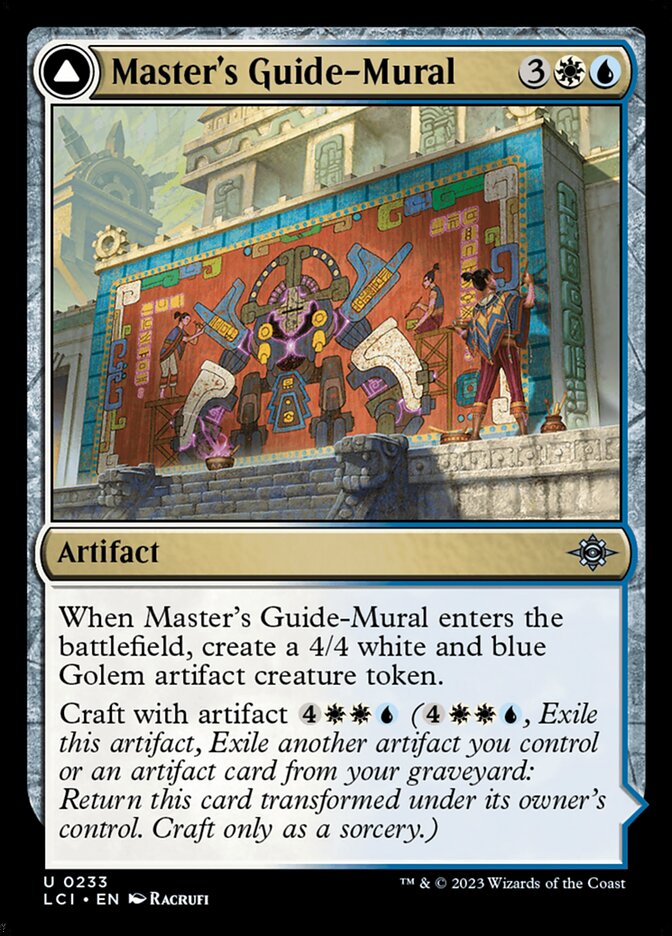
Master's Guide-Mural shows that Azorius () is a controlling color pair focused on artifacts and the craft mechanic. The deck is in no particular hurry to win games, so focus on efficient removal, card draw, cheap blockers, and artifacts that craft into powerful late game cards.
Dimir Descend (Control)
Uchbenbak, the Great Mistake could be a great mistake for you to draft if you don’t take filling up your graveyard seriously. If you do, this is a well-sized creature that your opponent will have to deal with twice. You can also pick up other compelling descend payoffs like Council of Echoes and Stinging Cave Crawler. Orazca Puzzle-Door, Sage of Days, Song of Stupefaction, and Another Chance are some of the best commons for filling up your graveyard.
Rakdos Descend (Aggro)
Zoyowa Lava-Tongue is a scary payoff that could quickly have your opponent making uncomfortable choices. The key of course is to continuously descend each turn if you can, so prioritize cards like Dead Weight, Fanatical Offering, and Volatile Wanderglyph.
Gruul Dinosaurs (Midrange)
Itzquinth, Firstborn of Gishath is a strong signpost uncommon that’s solid on its own but even better with other dinosaurs. It headlines a pretty straightforward archetype that wants to field big fat prehistoric lizards and then turn them sideways. Be on the lookout for powerful cards that care about dinosaurs like Belligerent Yearling, Triumphant Chomp and Earthshaker Dreadmaw.
Selesnya Buffs (Aggro)
Kutzil, Malamet Exemplar has some confusing text, but in essence it says, “The rich get richer.” If you can buff your creatures via equipment, +1/+1 counters (cough, cough, explore), pump spells, or other means, Kutzil, Malamet Exemplar could hook you up with some free cards! This is a straightforward but flexible archetype that should be one of the most aggressive decks in the format. Don’t stress too much about the theme as it’s limited to just two cards (Kutzil, Malamet Exemplar and Sovereign Okinec Ahau).
Orzhov Sacrifice (Midrange)
Bartolomé del Presidio is a strong sacrifice engine that harkens back to better, forgotten days of Cartel Aristocrat and Blood Artist. If you can provide it with fodder like Greedy Freebooter and Mephitic Draught, it can quickly grow in size while triggering beneficial death triggers. This is a key focus for Orzhov () in this set, and it overlaps well with Rakdos's () theme of gradual descent. Other weaker sac engines like Acolyte of Aclazotz and Vito's Inquisitor help to provide redundancy if needed.
Izzet Pirates/Artifacts (Aggro)
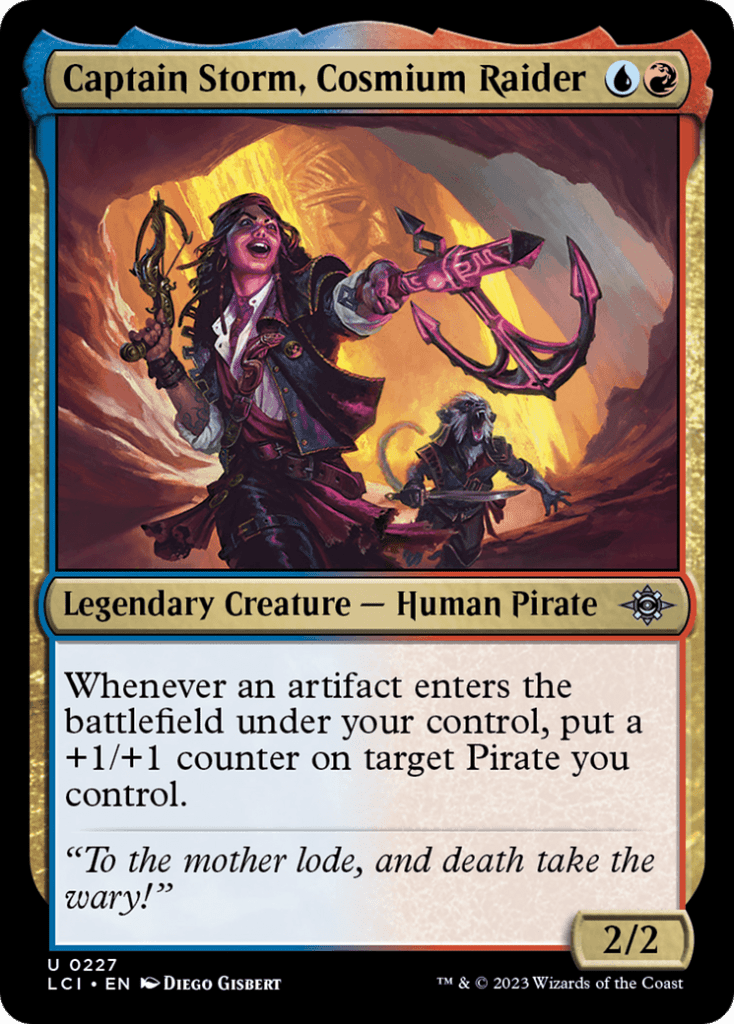
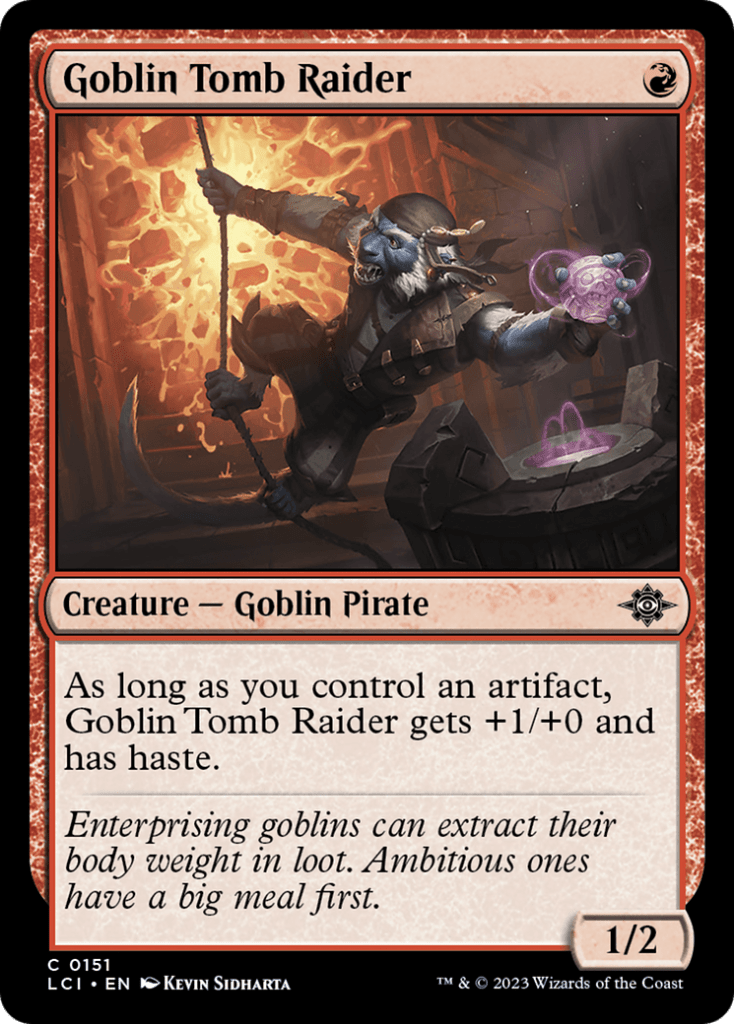
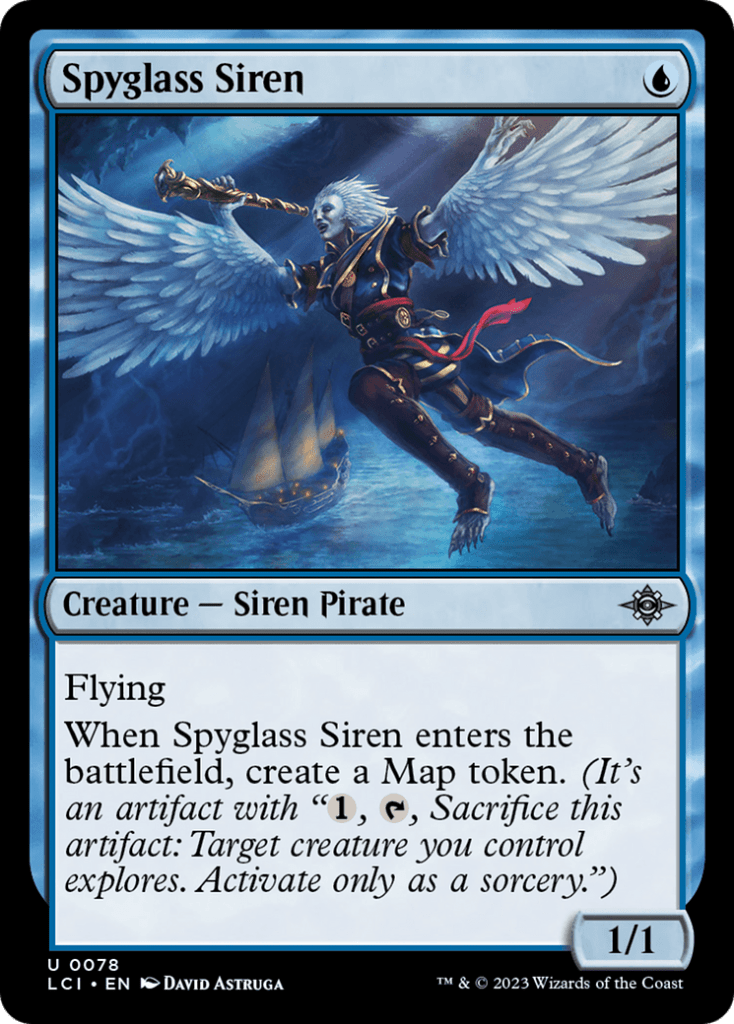
Captain Storm, Cosmium Raider headlines a neat archetype that wants to pair pirates and artifacts. Cheap pirates like Spyglass Siren, Goblin Tomb Raider, and Brazen Blademaster wear equipment like Pirate Hat well. The deck also makes good use of Map/ Treasure tokens to supplement any nontoken artifacts it plays.
Golgari Descend (Midrange)
Akawalli, the Seething Tower is another strong descend payoff that occupies a similar deck building space to Uchbenbak, the Great Mistake. The main difference is blue has been subbed out for green, which changes which cards you will be playing to fill up your graveyard/take advantage of doing so. Green is a bit less adept at milling itself, though In the Presence of Ages and Mineshaft Spider seem solid. Whether you play Dimir () or Golgari () should usually come down to which multicolor cards you open/draft.
Boros Tap (Midrange)
Caparocti Sunborn highlights a unique theme that departs somewhat from standard Boros () orthodoxies. Rather than turning your creatures sideways to attack, you can join Caparocti Sunborn in turning them sideways for a variety of beneficial effects. You are also welcome to tap artifacts, which should play well with Treasure and Map tokens. Tapping your permanents this way provides another route for triggering Attentive Sunscribe and Volatile Wanderglyph.
Simic Explore (Midrange)
Nicanzil, Current Conductor represents the final archetype and seeks to explore. Merfolk Cave-Diver and Twists and Turns are the only other direct explore payoffs in the set. Payoffs are hardly needed though with a mechanic this good, so expect to build some great looking midrange decks in this color pair. I’d expect Simic's () main caveat to be its classic shortcoming of having the worst creature removal of any color pair.
How Do the Archetypes/Themes Overlap?
In a couple of subtle ways, there’s much overplay between the archetypes in this set. This can give cards a couple of useful dimensions that might not be immediately apparent. Take Tinker's Tote for instance. At first, this artifact just looks like a weak token spell with a bonus artifact attached that can be sacrificed for 3 life. But in practice:
- Azorius () enjoys that this is an artifact which makes two blockers, gains life, and bins itself for crafting.
- Orzhov () gets three distinct permanents that it can sacrifice for value.
- Boros () gets three permanents that it can tap to fuel various effects.
From this example, we can springboard into more broad notes on overall archetype overlap:
- Azorius's value/craft artifacts often play well in Orzhov, Boros, and Izzet.
- Dimir has a ton of overlap with Golgari and smaller overlap with Rakdos/sac themes.
- Rakdos descend/Orzhov sac have excellent synergy and often enjoy similar combinations of cards (i.e. Mephitic Draught + Fanatical Offering).
- Explore can incidentally set up crafts or gradual descent.
- Equipment can be effective in Selesnya, Boros, and Izzet for different reasons. Selesnya likes the sizing buffs, Izzet cares about artifacts, and Boros appreciates how equipment can be freely tapped with no consequences.
Top Commons
This section is ultimately a bit of guesswork, but I’ll try my hand at guessing some of the best commons for each color. These sections are always fun to revisit when I can gauge how close I came to getting each of these right.
White
#1. Petrify
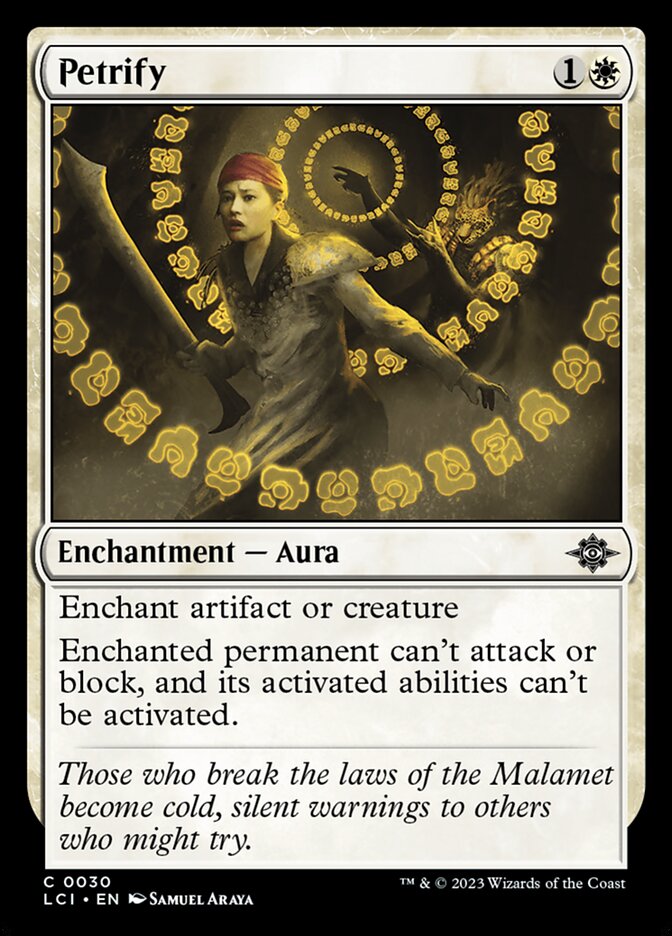
This is broad, efficient removal that’s vulnerable to sacrifice effects and enchantment destruction. While weak against Orzhov, this should excel against many archetypes and even hits artifacts if needed.
#2. Oltec Cloud Guard
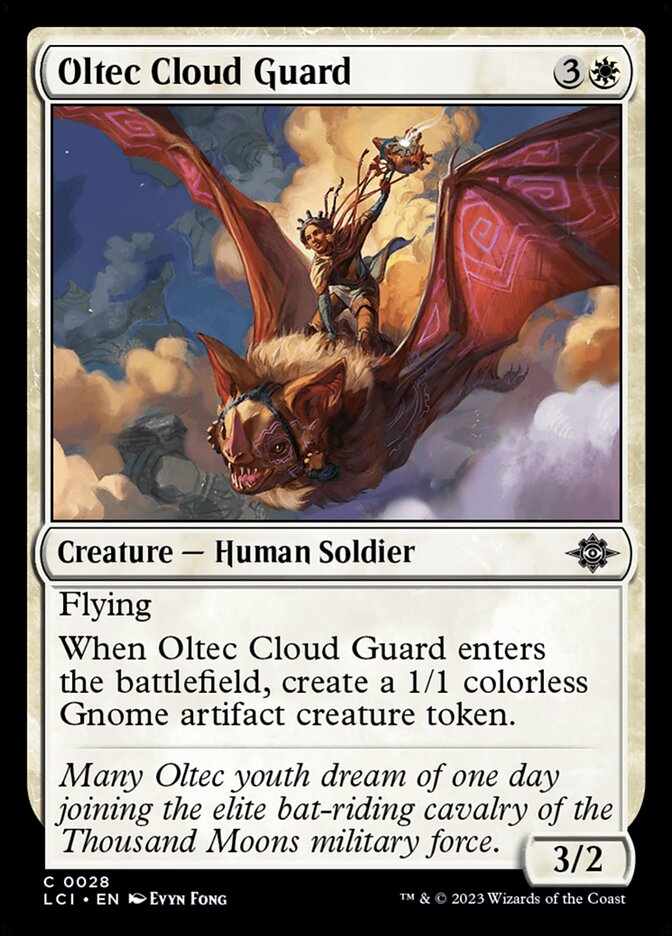
Assault Griffin looks much more appealing when it comes with a buddy in tow. This is solid vanilla that should do well in any archetype.
#3. Envoy of Okinec Ahau
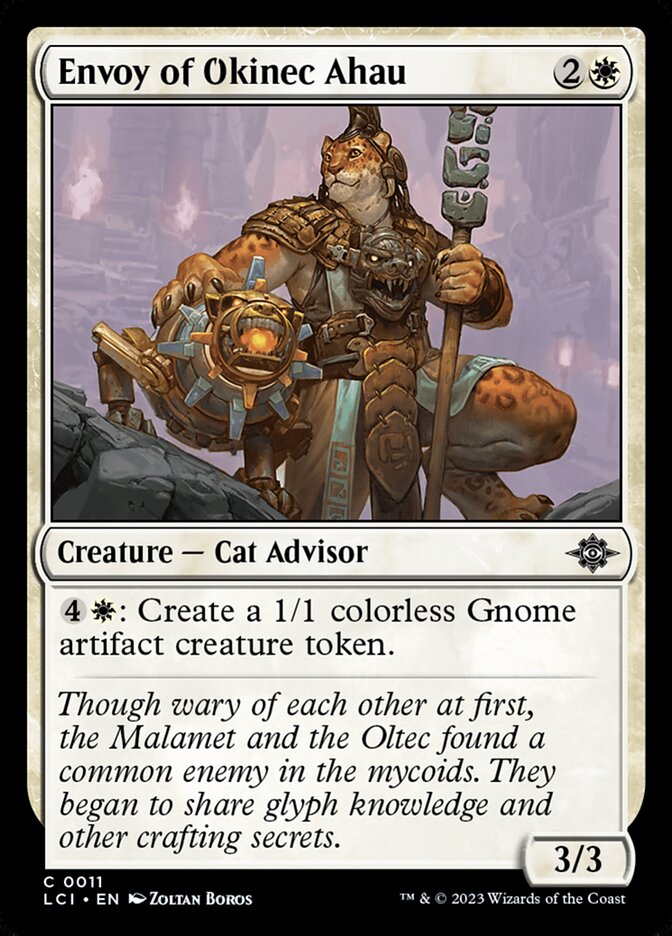
3/3 for 3 is a solid stat line, so I’m impressed to see a mana sink on top of that at common. Extra tokens are always useful but of slightly greater value in Orzhov/Boros.
#4. Quicksand Whirlpool
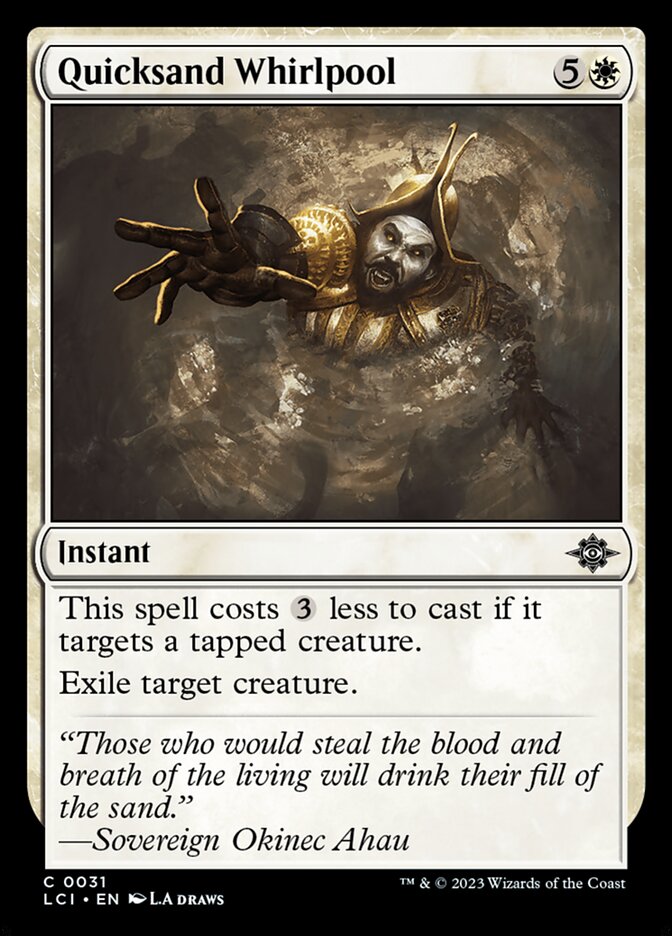
Banish from Edoras impressed me, so I expect decent things from Quicksand Whirlpool. Playing around this might be crucial to victory, as the difference between paying 3 or 6 mana is immense. Best in reactive decks that aren’t in a rush to clear blockers.
Blue
#1. Waterwind Scout
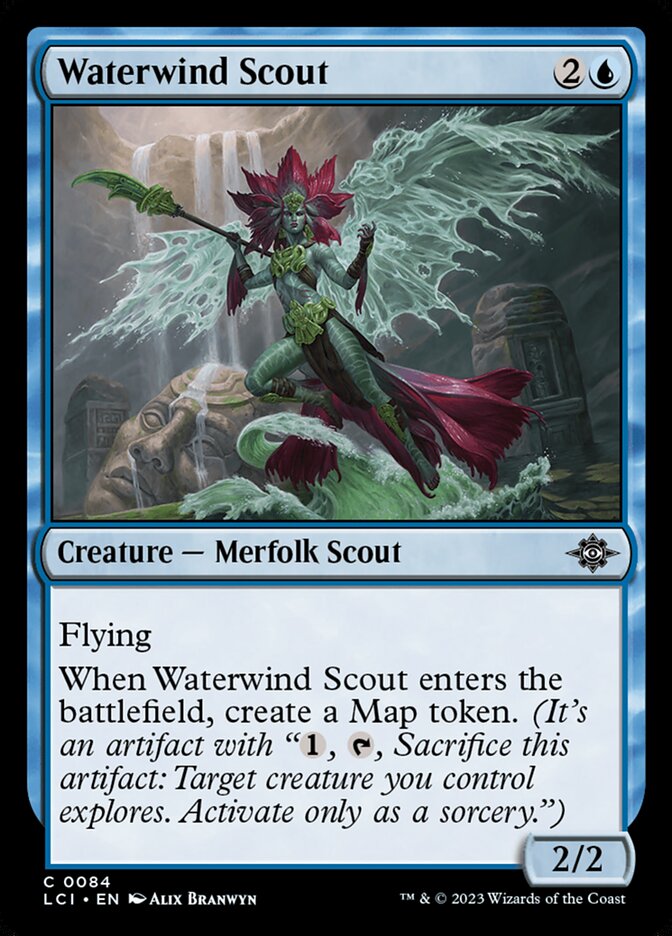
This might not quite end up being Preening Champion, but the fact that I’m even making this comparison should impress you. This is a straightforward value creature that excels in Izzet and Simic.
#2. River Herald Scout
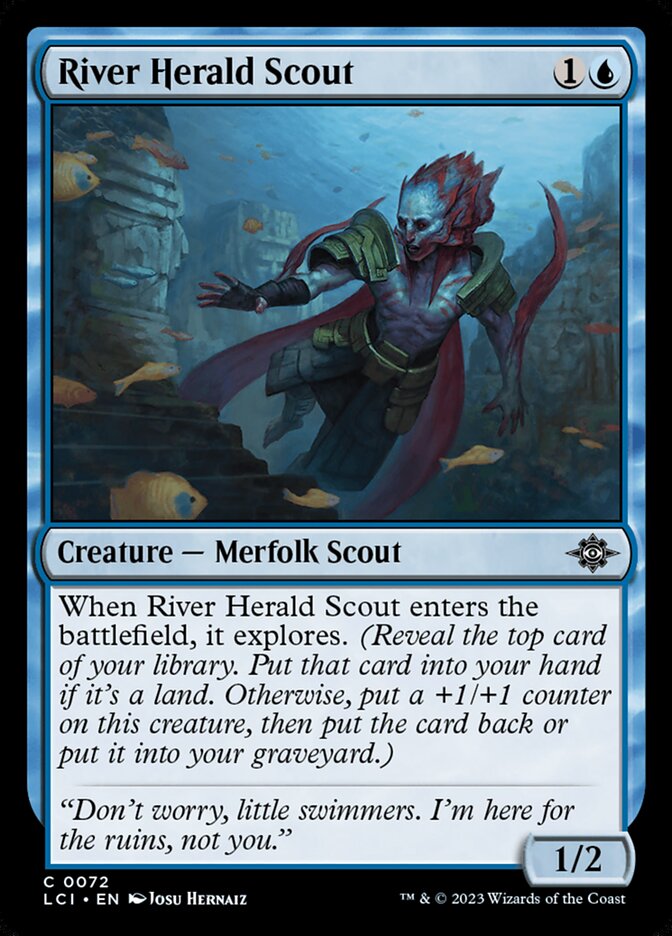
Another efficient merfolk that every blue deck should be happy to play.
#3. Brackish Blunder
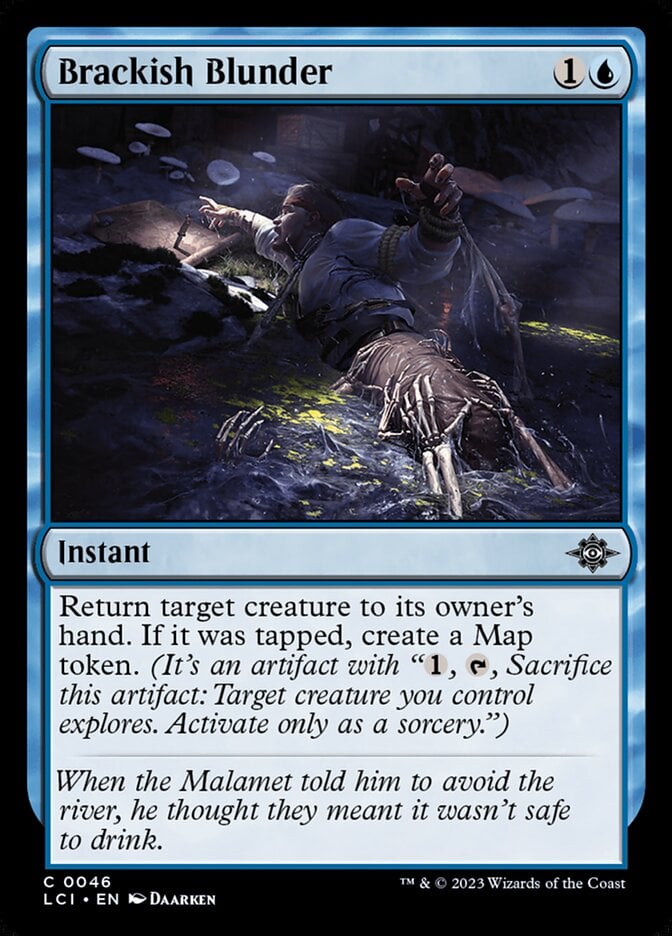
This is another card you might want to try to play around, as the rate here when making a Map token is excellent. This feels like a stronger Unsummon variant than most sets get.
#4. Orazca Puzzle-Door
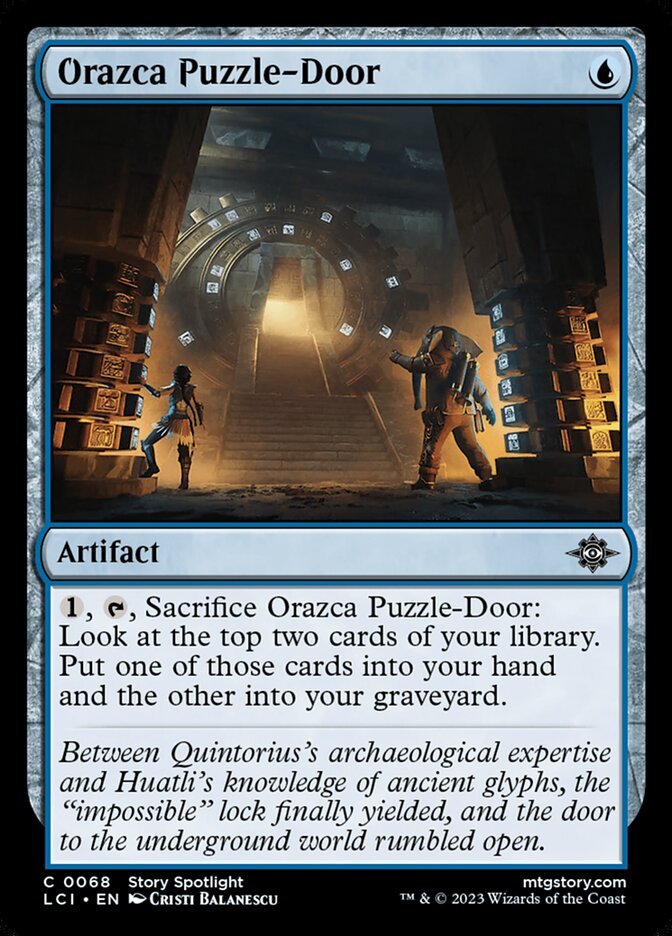
Efficient cantrip that helps to fill up your graveyard/mitigate early stumbling on mana. Also plays well in Azorius as one of the easiest ways to craft from the graveyard.
Black
#1. Join the Dead
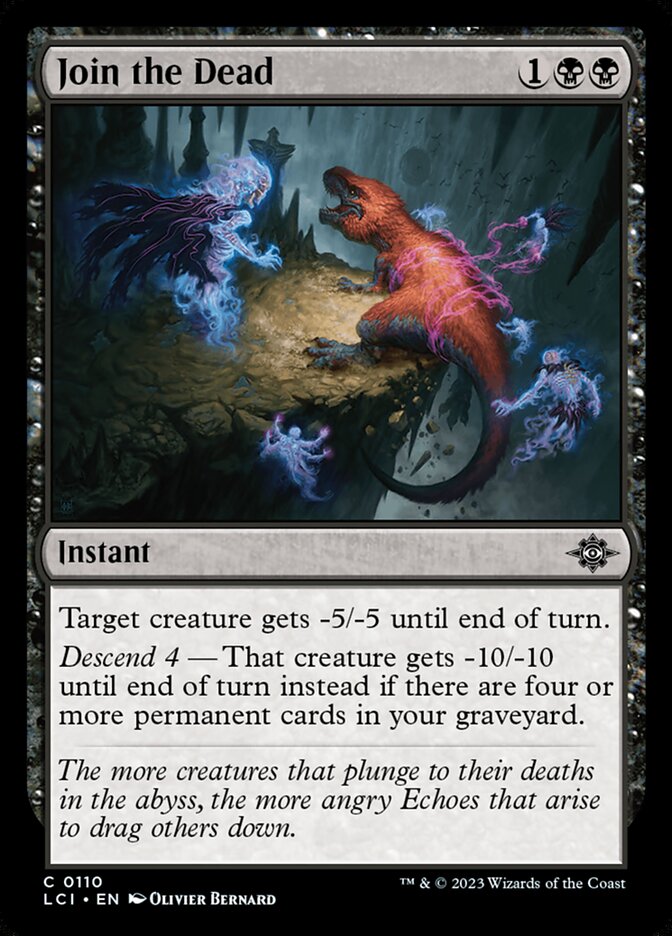
-5/-5 is close enough to Murder, and -10/-10 will only not be Murder in absurd circumstances. This might be the best common in the set, though can be hard on certain mana bases.
#2. Skullcap Snail

Virus Beetle was a solid rate, so upgrading it to exile and throwing it in a set with several uses for fodder creatures bodes well for this snail.
#3. Dead Weight
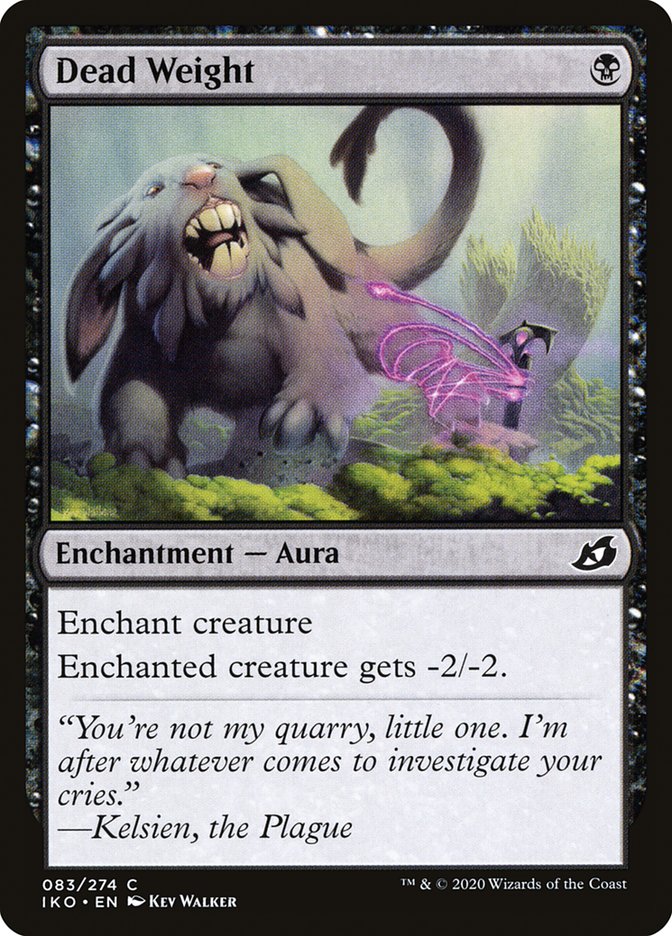
Descend-friendly removal that’s excellent against aggressive decks and not completely dead against fatties.
#4. Fanatical Offering
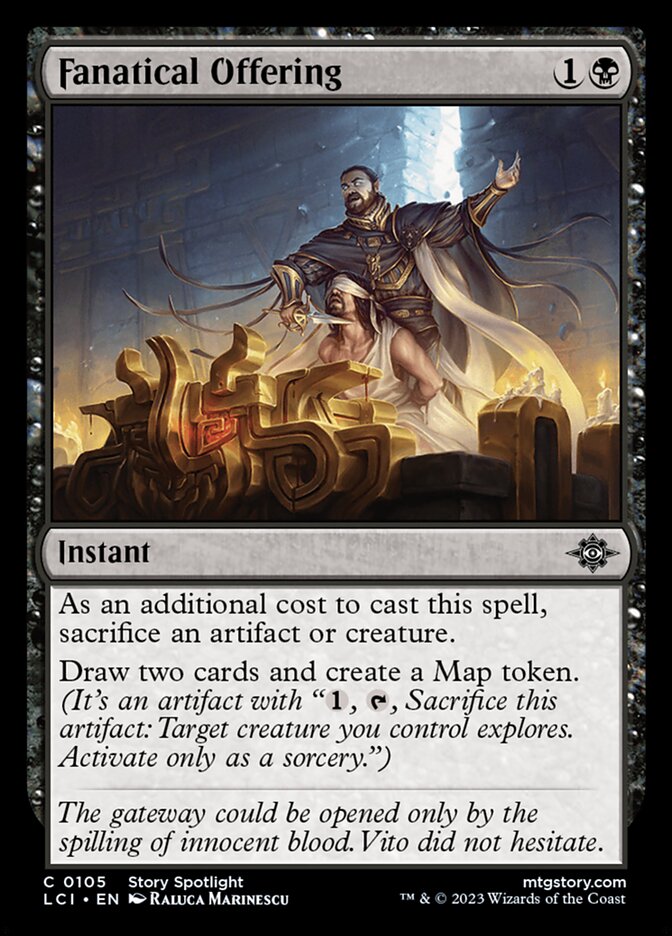
Excellent value card if you can provide fodder for it, which this set has in spades.
Red
#1. Abrade
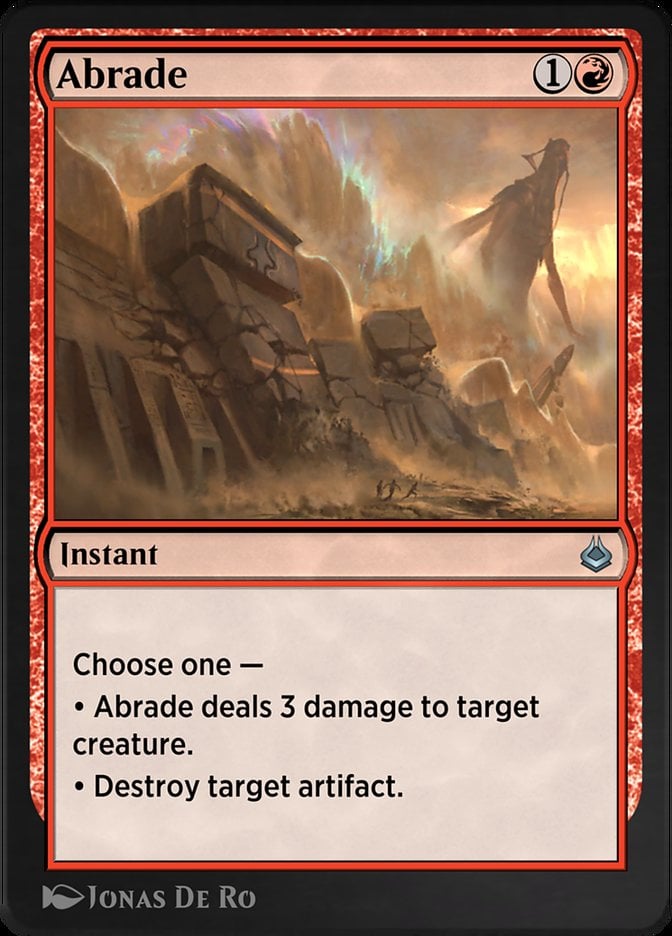
If Join the Dead isn’t the best common in the set, that’s because Abrade is! 3 damage for 2 mana is a respectable rate, but it’s the bonus artifact removal that puts this over the top. Expect to have many live targets in every matchup.
#2. Plundering Pirate

Strong value creature that looks good on rate, especially in Izzet Pirates. Also helps splash bombs/removal if desired, which is harder to do in this set than many previous ones.
#3. Volatile Wanderglyph
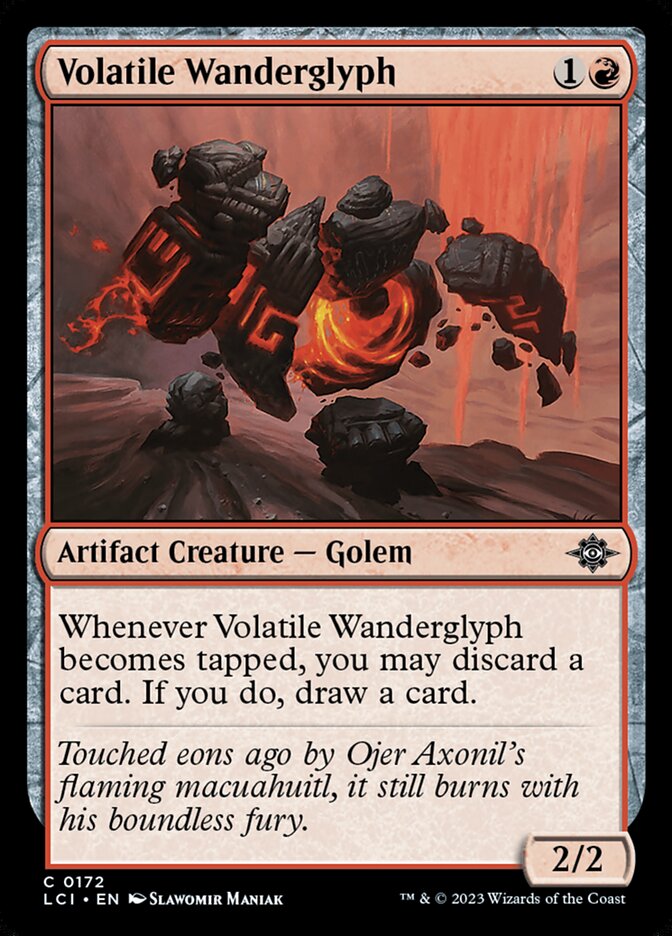
This is a solid 2-drop that plays well within every Rx archetype, as it's an artifact () that loots () and can be tapped for value ().
#4. Hotfoot Gnome
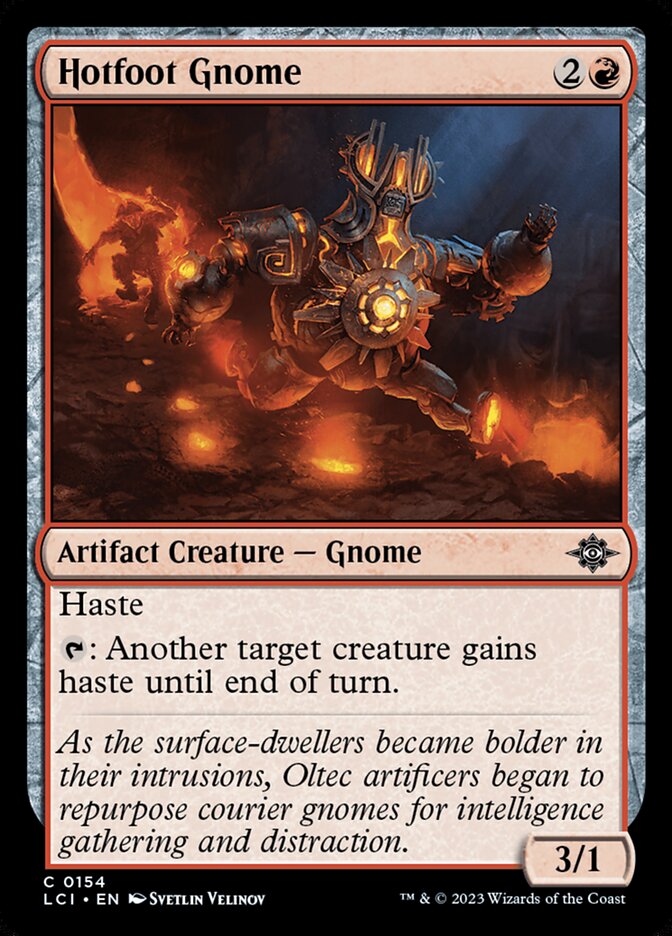
This punisher stumbles well while having a bit of extra play to it if the x/1 body gets held off (particularly in Gruul). It also enjoys that this set lacks any pingers or good -1/-1 tricks like Rat Out.
Green
#1. Huatli’s Final Strike
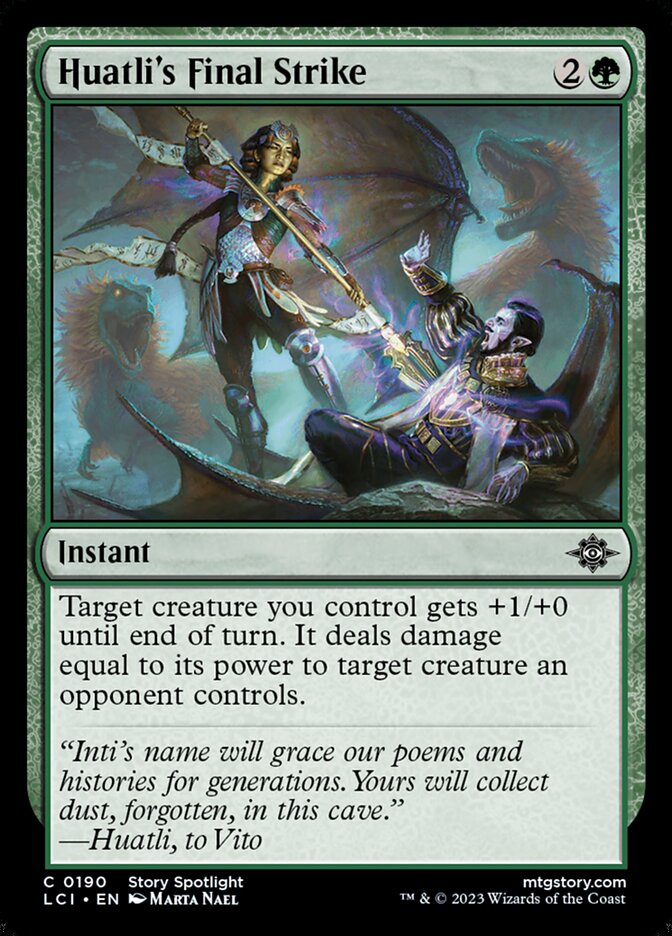
Ambuscade is better removal than green usually gets, so this flavorful rename should do quite nicely here. I also enjoy that it fulfills Selesnya’s theme while removing something.
#2. Pathingfinding Axejaw
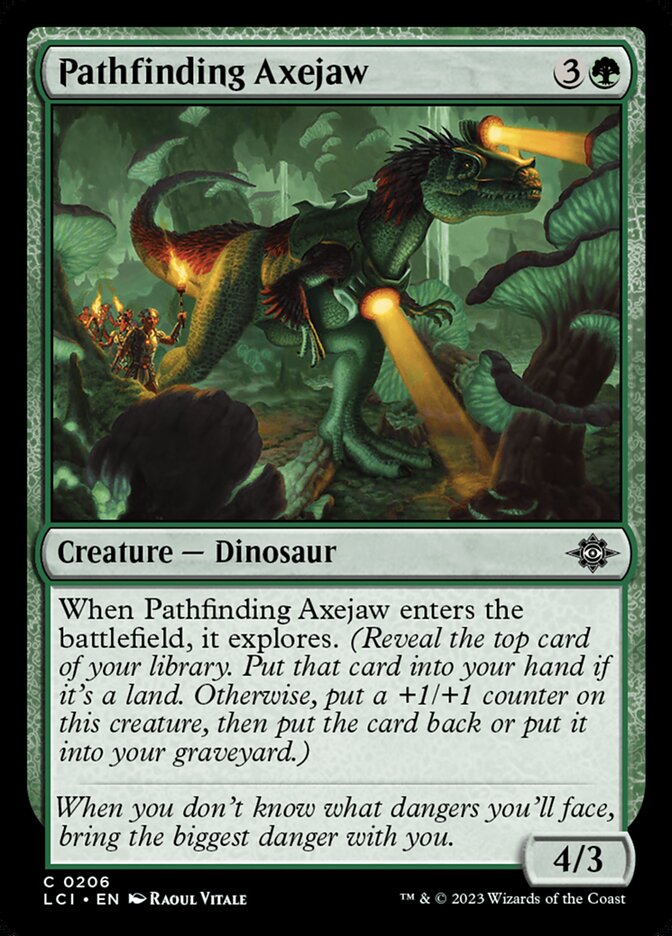
Great stats + explore is a recipe for success! I can imagine wanting to get the counter here more often than other explore cards, as 5/4 is larger than most other creatures in the set.
#3. Poison Dart Frog
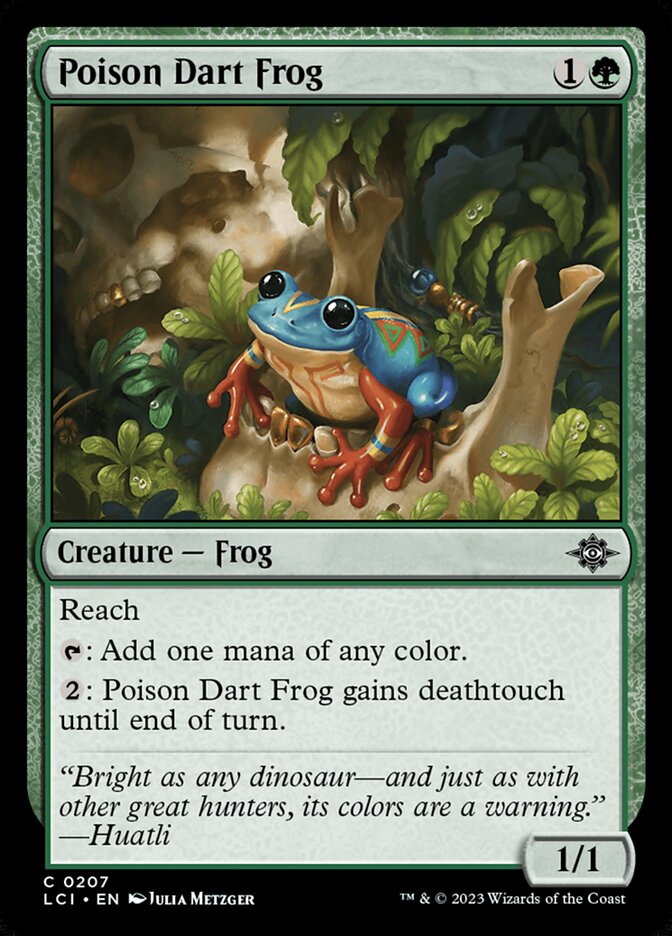
Solid mana dork that ramps, helps splash if needed, and trades off later once the mana is no longer useful. The lack of good ping effects makes me want to pick this higher than I might otherwise.
#4. River Herald Guide
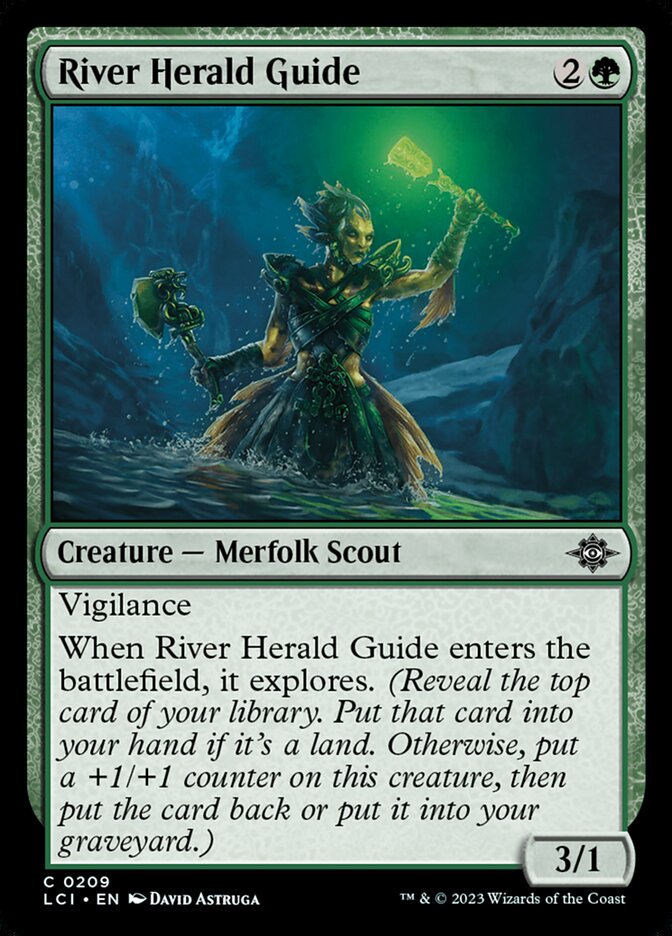
You’re definitely hoping to see a land off of this, as 4/2 trades with almost everything 3/1 does. Either way, the base rate is strong enough for any green deck to be interested.
Commons to Avoid
Modern Limited sets rarely have anything that is truly unplayable, but you’d be served wisely at prerelease by avoiding several cards.
Relic’s Roar
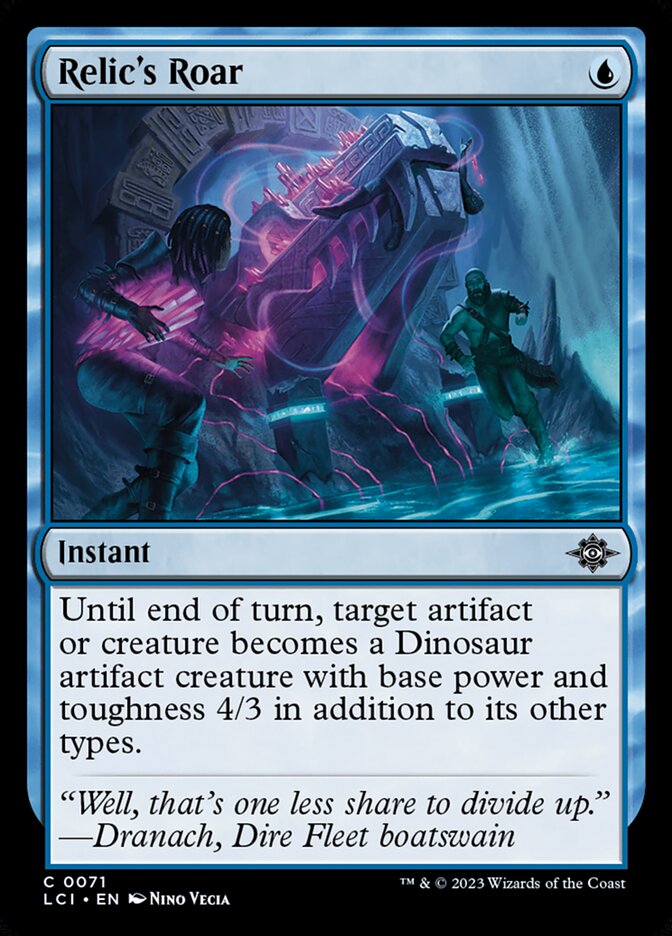
Relic's Roar is mana-efficient and tricky, but not card efficient. Only play this in very proactive blue decks with a lot of artifacts to target (usually Izzet).
Etali’s Favor
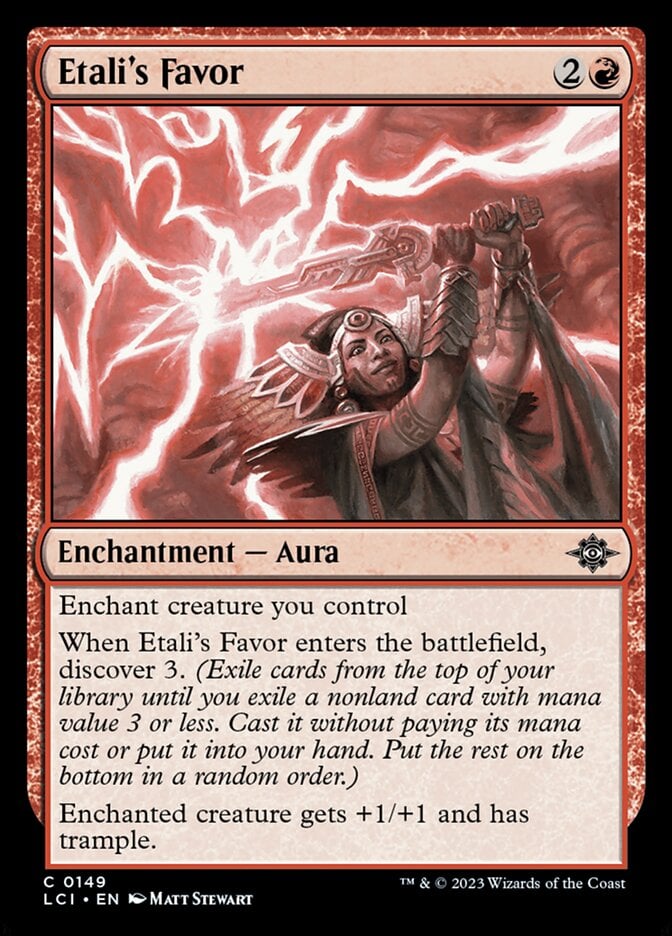
Etali's Favor is a mediocre cantripping aura with an unreliable spell attached to it. It doesn’t do anything obvious for any Rx archetype either.
Tectonic Hazard
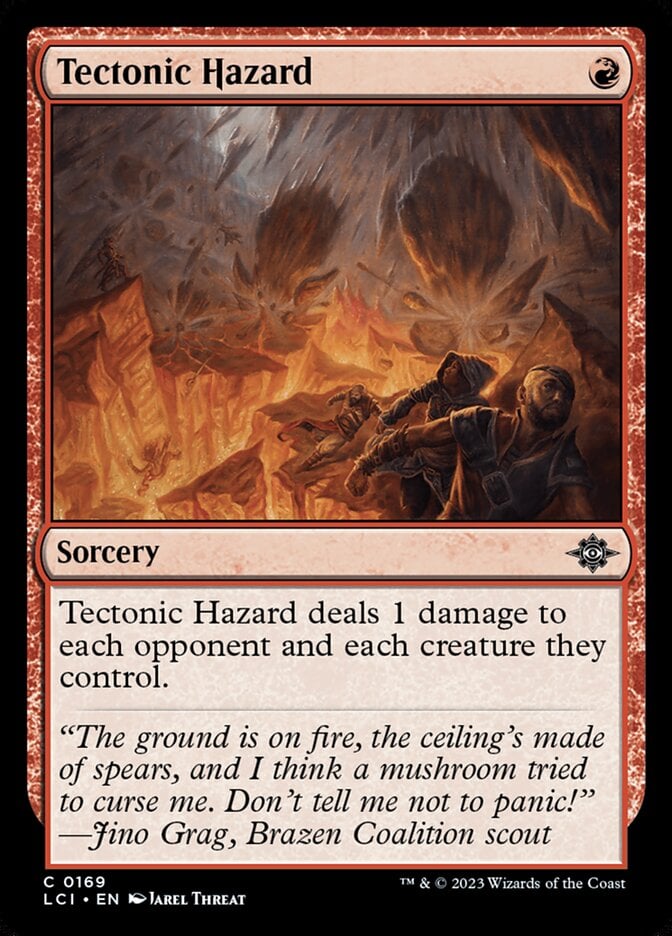
Tectonic Hazard is good if you see several x/1s from your opponent, but I wouldn’t maindeck it.
Disturbed Slumber
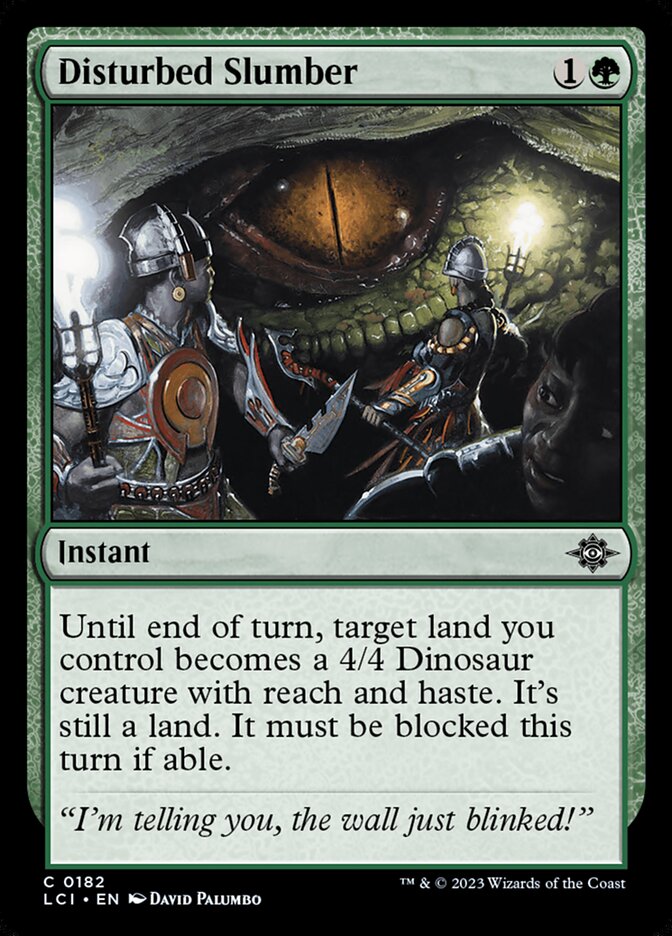
Disturbed Slumber is a strange “removal spell” that requires very particular timing. It can also ambush opposing fliers, though at great risk to whichever land you choose to animate. The resemblance to Vengeant Earth suggests this is best left in your sideboard (or the garbage can of your LGS).
Hunter’s Blowgun
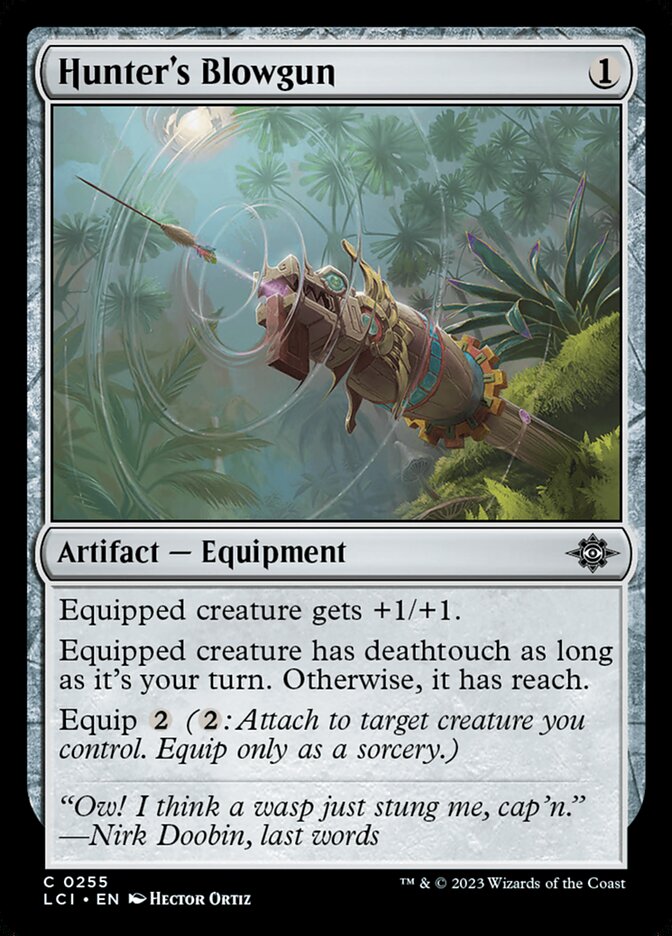
Hunter's Blowgun lacks ping effects to play off, though I wouldn’t begrudge you for trying it if you are struggling versus fliers.
Cartographer’s Companion
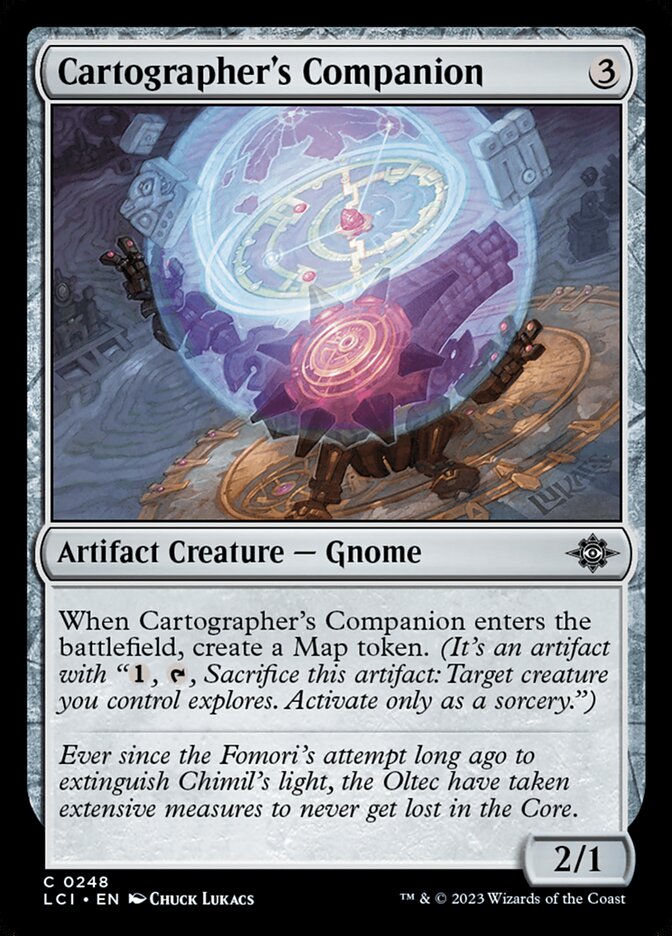
Cartographer's Companion isn’t unplayable, but almost every colored 3-drop outclasses this a bit on rate.
Bombs
Well, it’s Sealed, so you know we’ve got bombs! Here’s a non-exhaustive list of some cards you might lose to at prerelease this weekend. Single pipped cards on this list make fantastic candidates to splash if you can.
Resplendent Angel
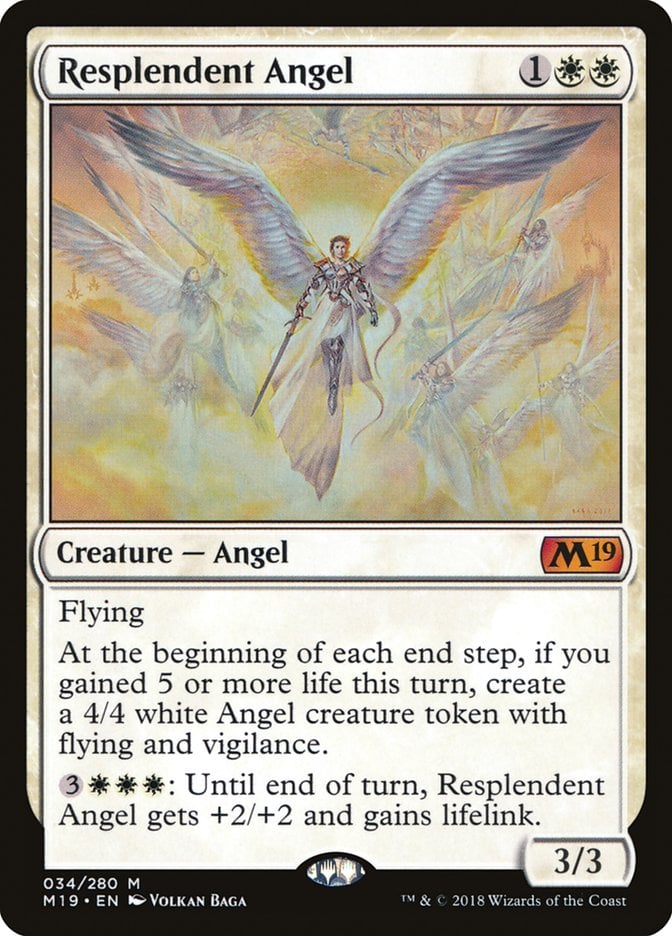
One successful activation + attack will probably win you the game, and it’s not as though for a 3/3 flier is bad to begin with. Only real caveat here is needing to be base white.
Ojer Pakpatiq, Deepest Epoch
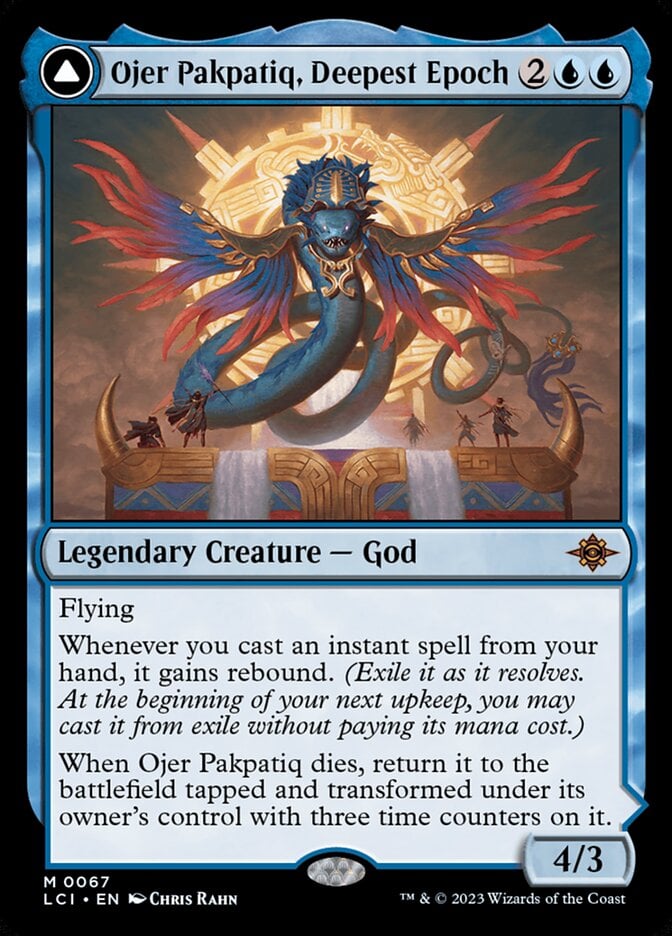
Building around instants is a bit at odds with other themes in this set, but the base stats + free recursion are great anyways.
Aclazotz, Deepest Betrayal
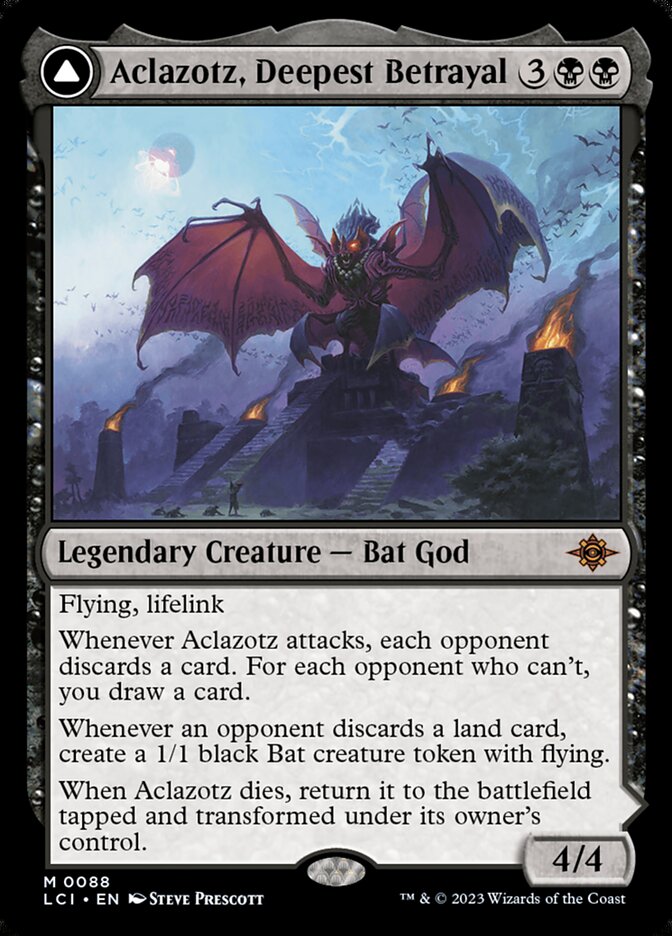
Giant black Baneslayer Angel that gets value every attack and might even come back after it dies. Your opponent better hope they drew Petrify!
Bonehoard Dracosaur
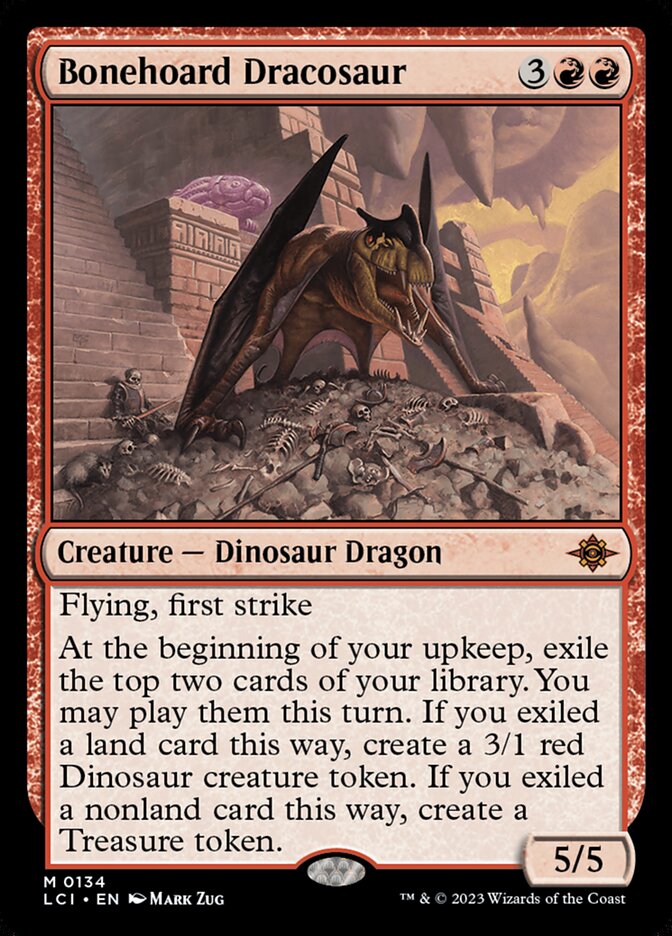
If you untap with this, your expected win rate should be in the high 90s. This is a completely absurd card and my choice for the #1 bomb in Lost Caverns.
Huatli, Poet of Unity

The base rate is so solid that the extra saga feels gratuitous, and yet the saga can outright win games if you survive long enough. Just try to wait for your opponent to tap out first (if possible).
Ojer Kaslem, Deepest Growth

It’s unclear whether Ojer Kaslem, Deepest Growth or Aclazotz, Deepest Betrayal is a more absurd Limited card. Either way, this is a completely absurd mythic that I would expect to force green for.
Quintorius Kand
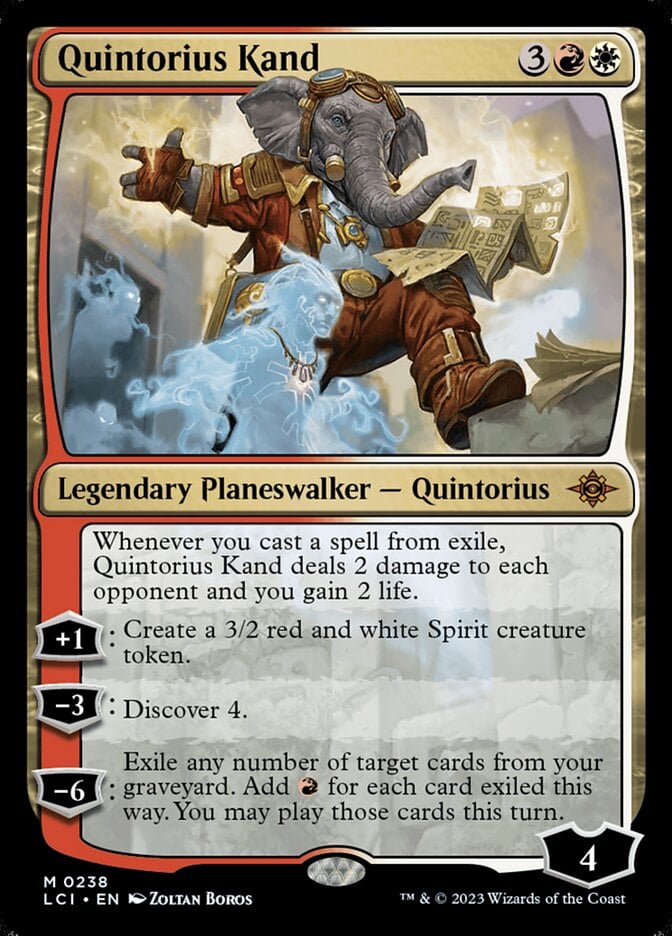
The only planeswalker in this set, and a good one. +1’ing to try to hit 7 loyalty and then -6 with it still in play (for the extra exile value) should be the most common play pattern. I’d expect this to be one of the most commonly splashed bombs.
Chimil, the Inner Sun
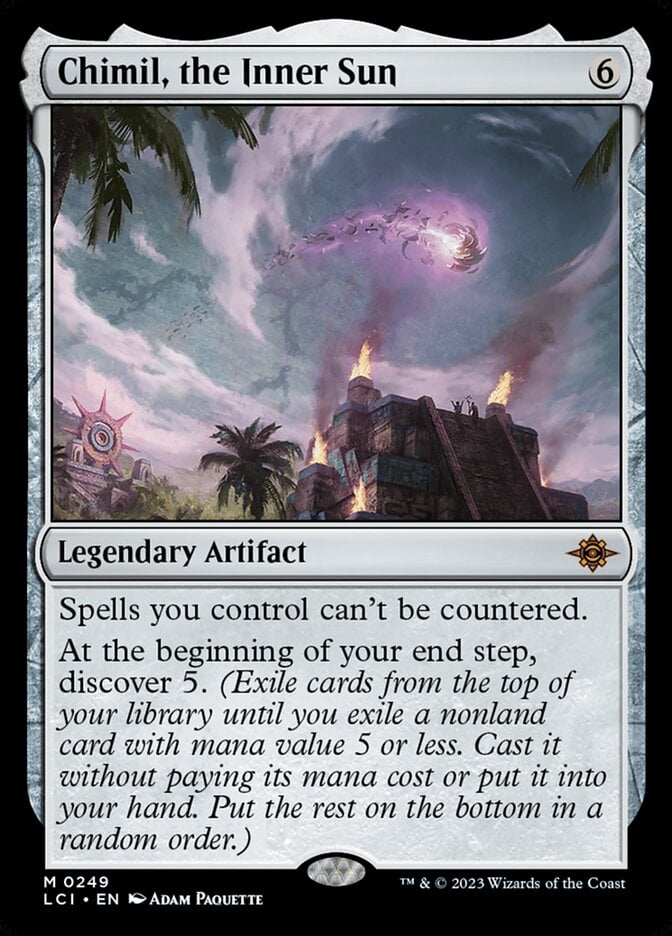
This is a strong value engine that only takes a few turns to get going and can go in any deck. The extra “can’t be countered” text isn’t especially important but could make a blue player miserable (always a plus).
Unstable Glyphbridge
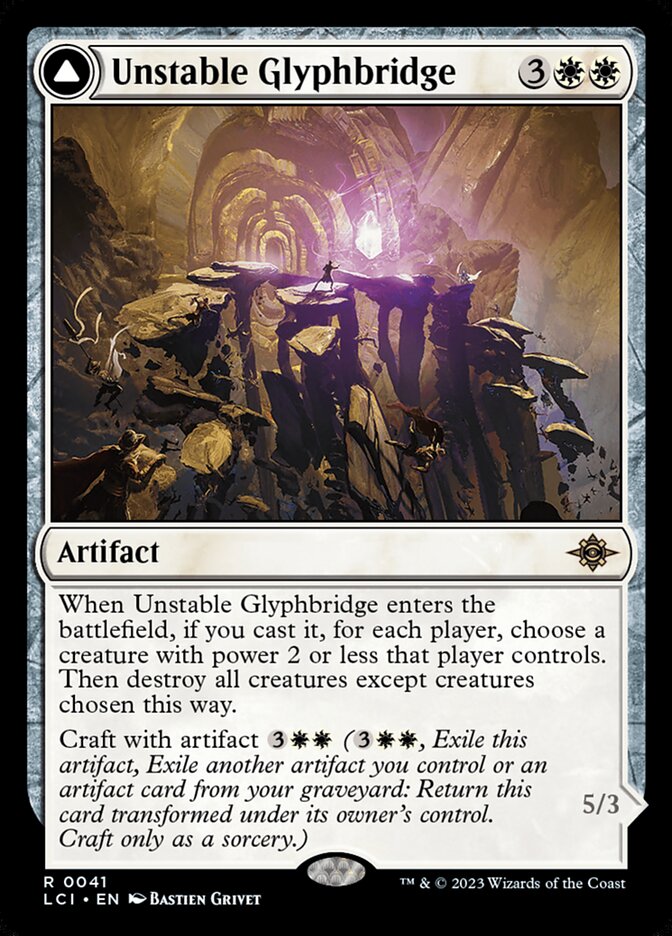
Sweeper of sorts that transforms into a strong artifact creature afterwards. Because you get to choose which creature survives, you should always be keeping a better creature than your opponent.
Akal Pakal, First Among Equals

This is an incredible card advantage engine that’s resilient to most removal in the set and blocks well. Once you get the first trigger going, you can keep finding more and more artifacts and bury your opponent in gradual card advantage.
Kitesail Larcenist

This is an awesome Fiend Hunter variant in a surprising new color for that effect. It has great base stats and leaves your opponent in a spot where they must either kill this or make a tough choice.
Subterranean Schooner
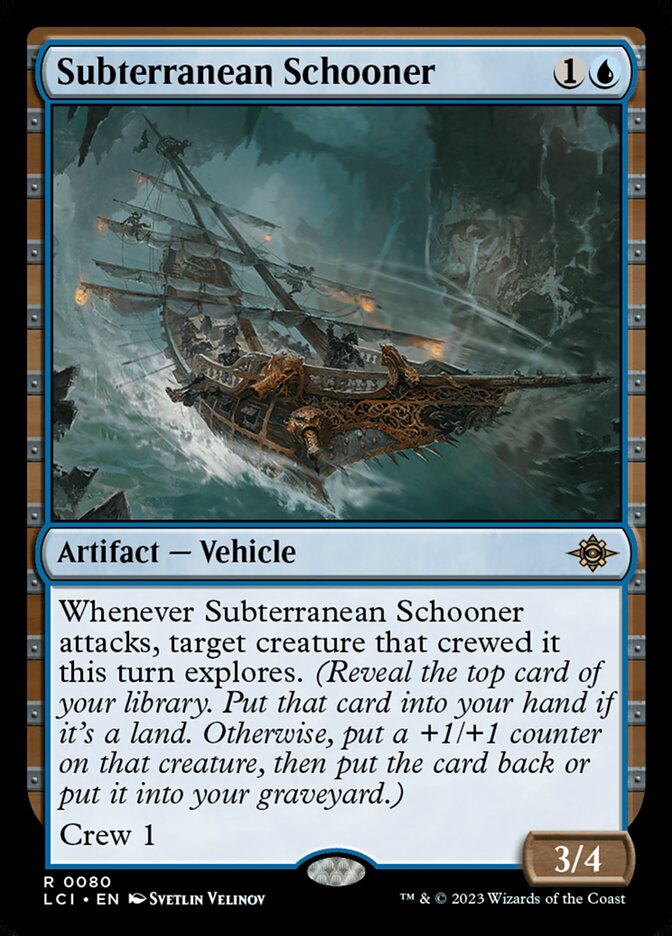
This is too efficient not to be good. After seeing this card, I can’t imagine not ripping up the next Silent Submersible I see.
Preacher of the Schism
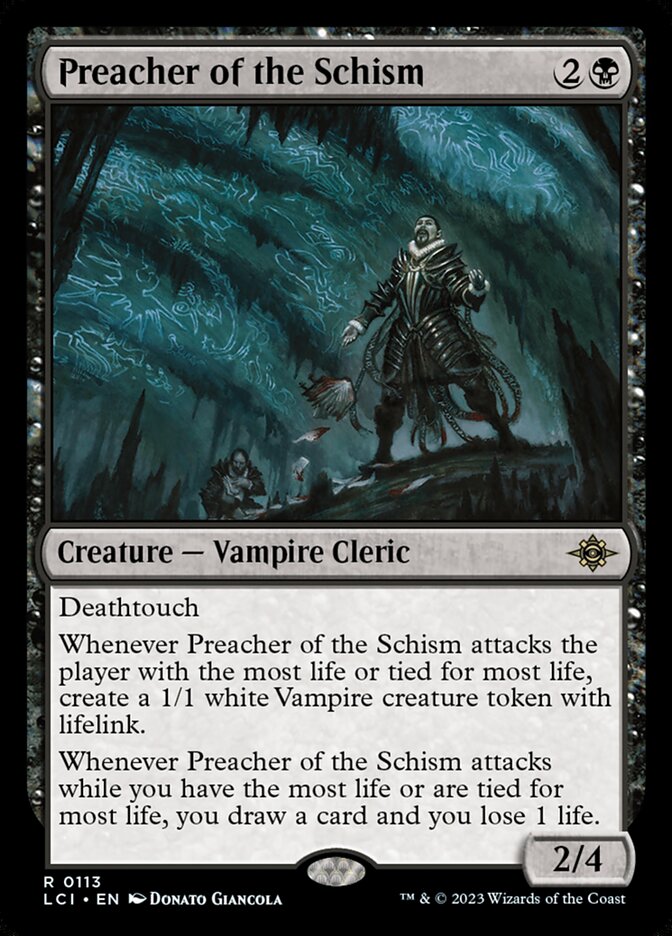
You’ll be blessed when you attack with this preacher, regardless of whether you are making 1/1s or drawing cards. The base stats here are just too good!
Starving Revenant

They don’t make 3-for-1s easier than this, and you aren’t forced to draw the cards if life total is a concern too. Throw in good sizing and a powerful late game ability, and this becomes one of the strongest reasons to be black in the set!
Breeches, Eager Pillager
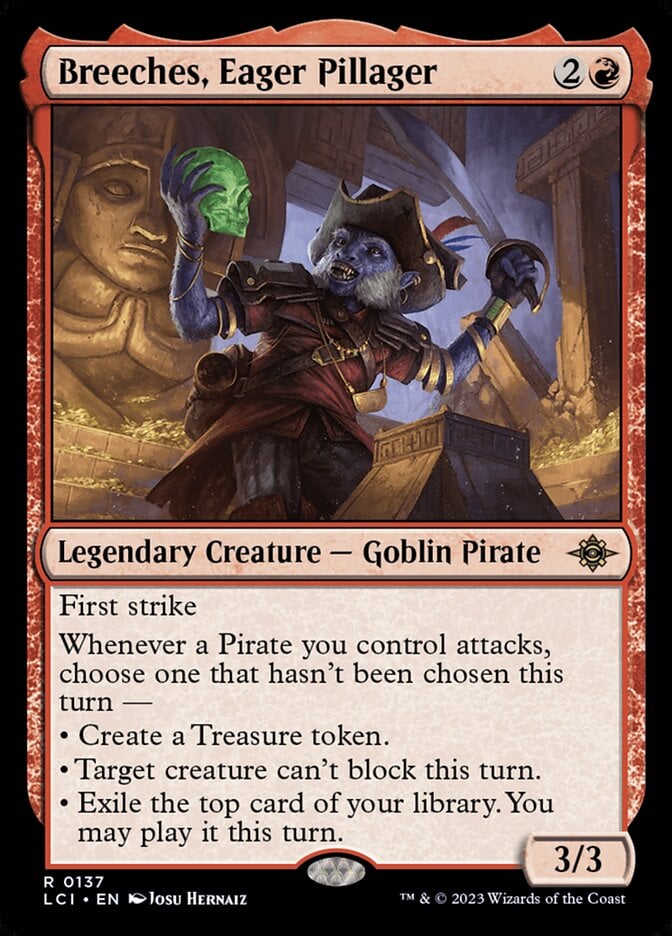
3/3 first strike + upside is a great rate, but this gets even better if you’re playing other pirates.
Dire Flail
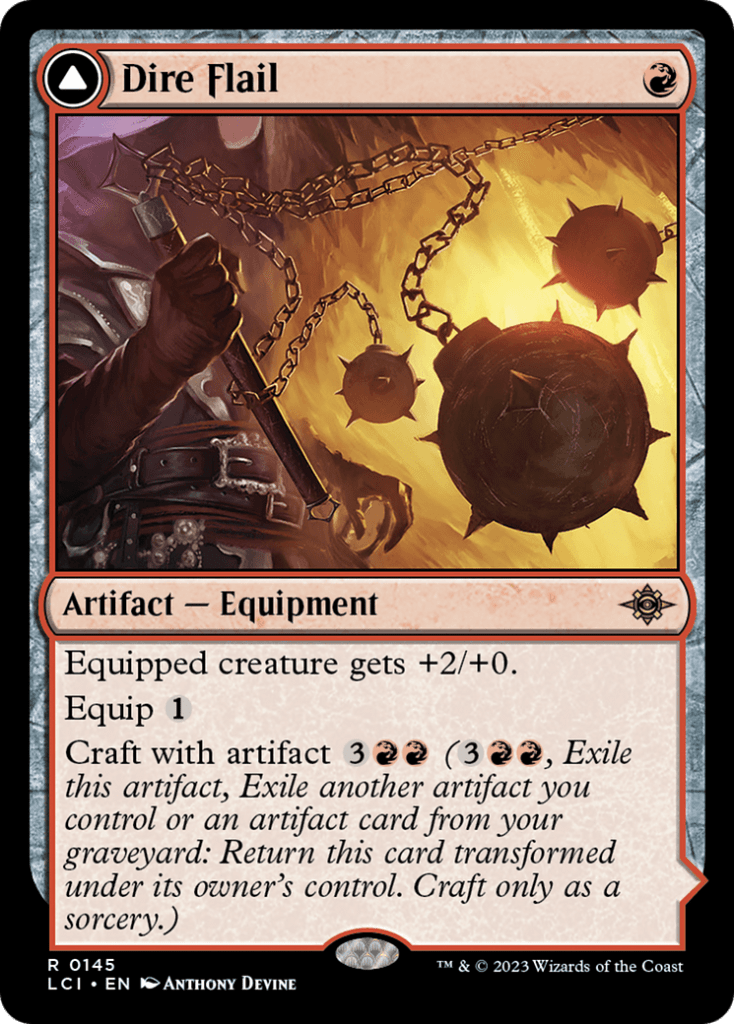
Bonesplitter baseline with a powerful backside that can burn your opponent out quickly.
Magmatic Galleon
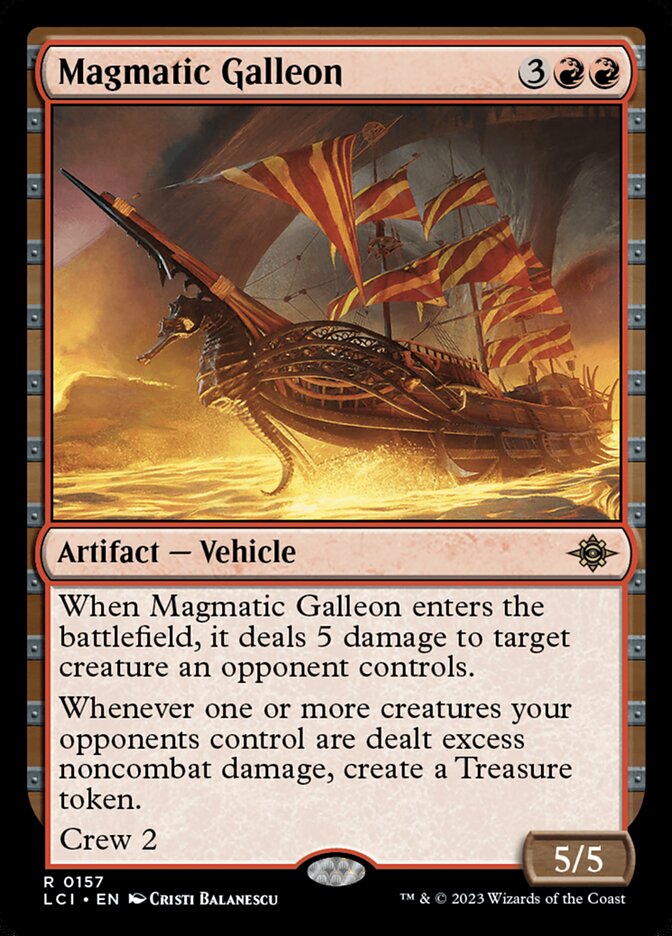
Vehicular Flametongue Kavu of sorts. The affordable crew cost, good sizing and free Treasure are all appealing aspects to this card.
Trumpeting Carnosaur
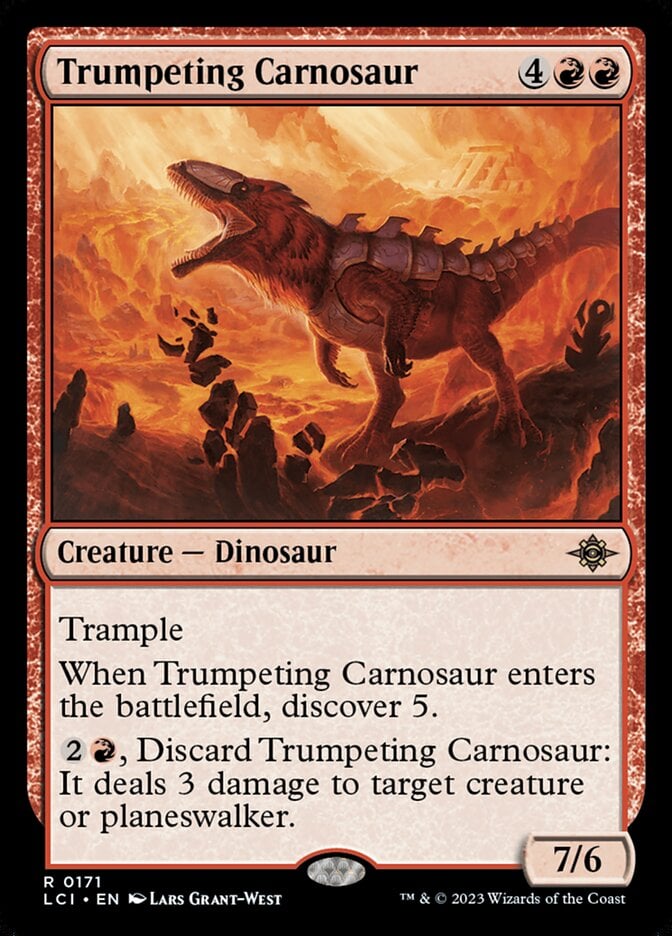
Try not to discard this if you aren’t getting run over, as this is much better as a 6-drop than an Open Fire. The flexibility is appreciated though, as is the top-notch power level overall.
Bedrock Tortoise
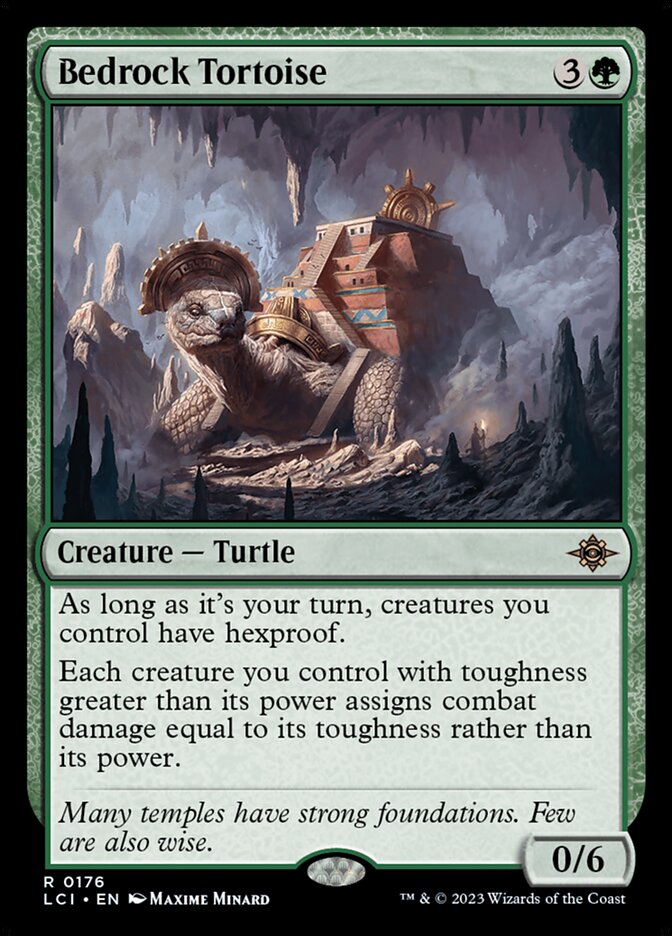
6/6 baseline with a limited form of protection on your turn is an incredible rate, and this is even splashable. I wouldn’t worry too much about playing high toughness creatures with this, as it will never punish you for being power-slanted.
Pugnacious Hammerskull
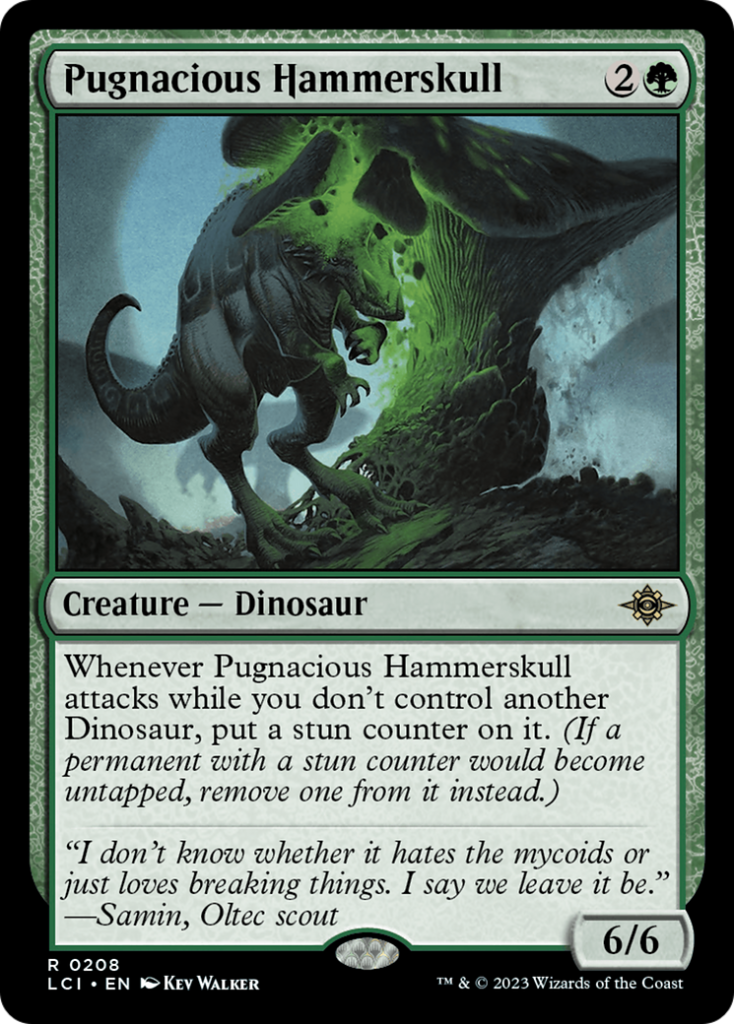
The drawback on this feels egregiously low for what is essentially a 3-mana 6/6! I’d probably play this even without other dinosaurs, as it blocks absurdly well.
Sentinel of the Nameless City
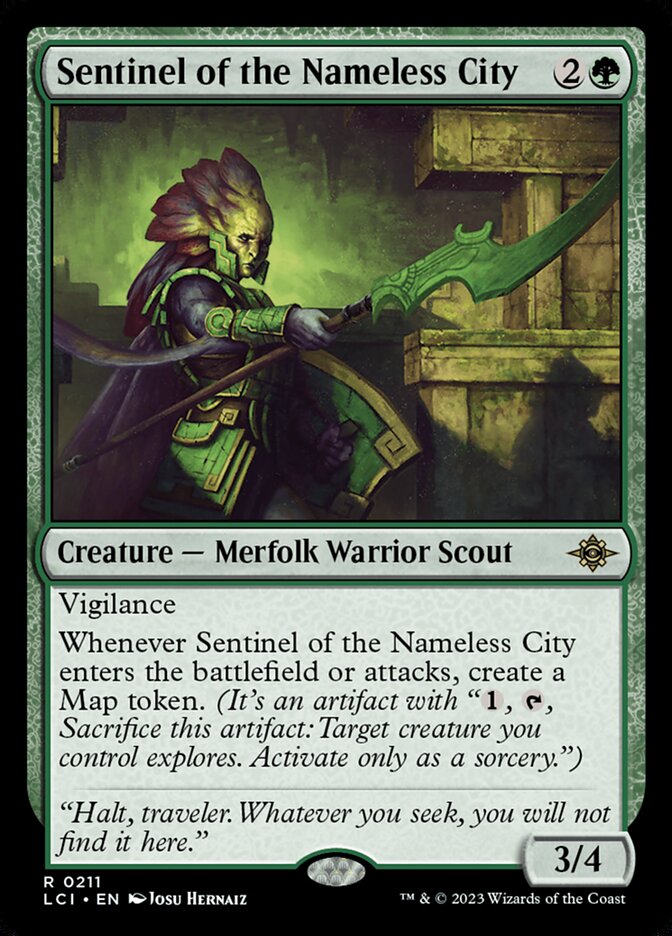
Another card with an absurd rate for Limited that seems like a shoe-in for Standard play. Vigilance is crucial here, and it lets this pick up value against aggro while remaining on defense.
Palani’s Hatcher
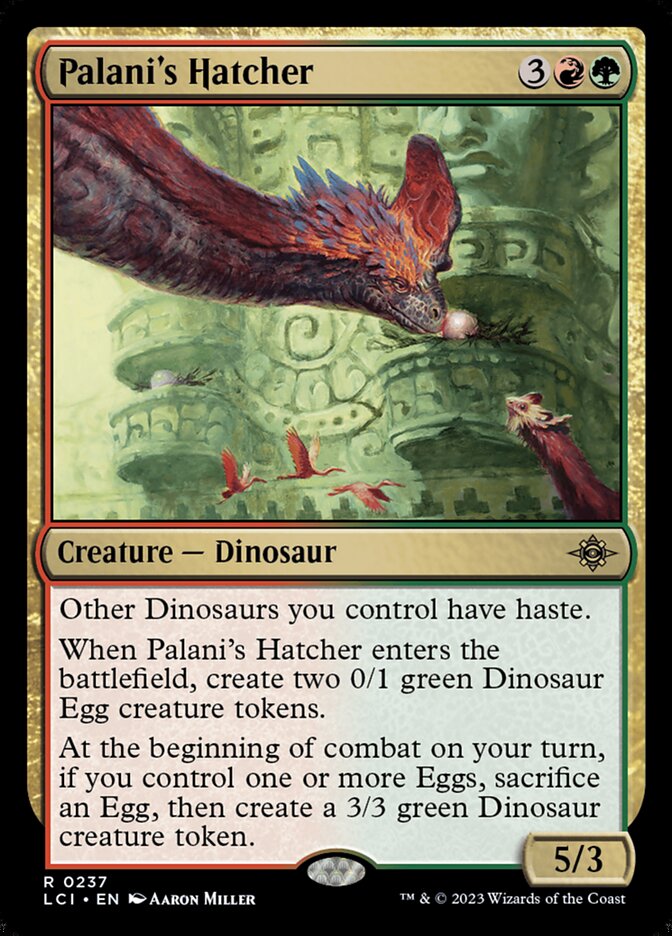
Strong card on its own that plays especially well with other dinosaurs thanks to the global haste buff.
The Belligerent
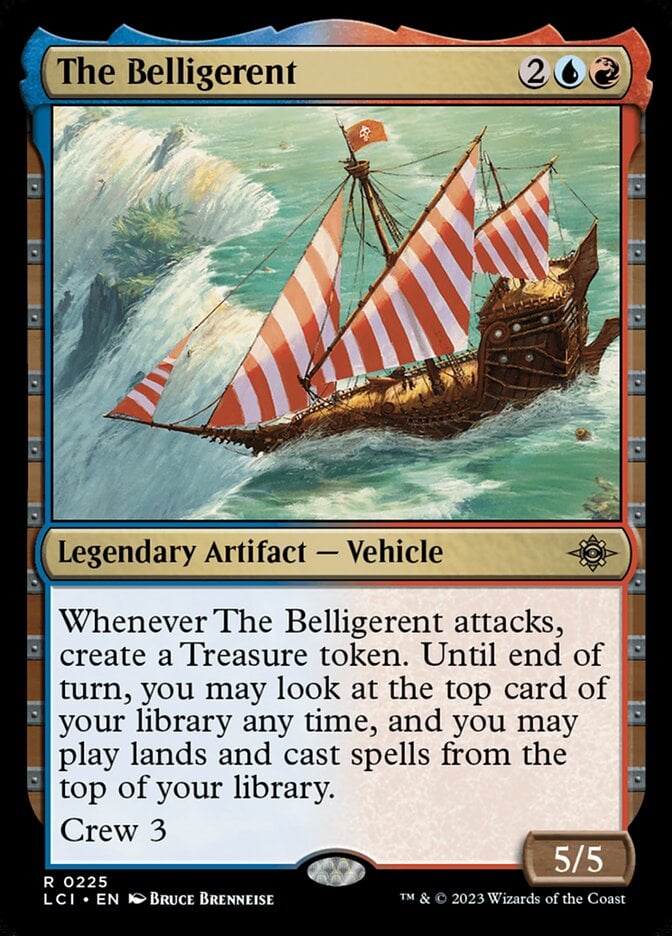
This is a bit clunky, but the sizing and pseudo-Future Sight from attacking are impressive. Would consider splashing this in Gruul Dinosaurs if possible.
Deepfathom Echo
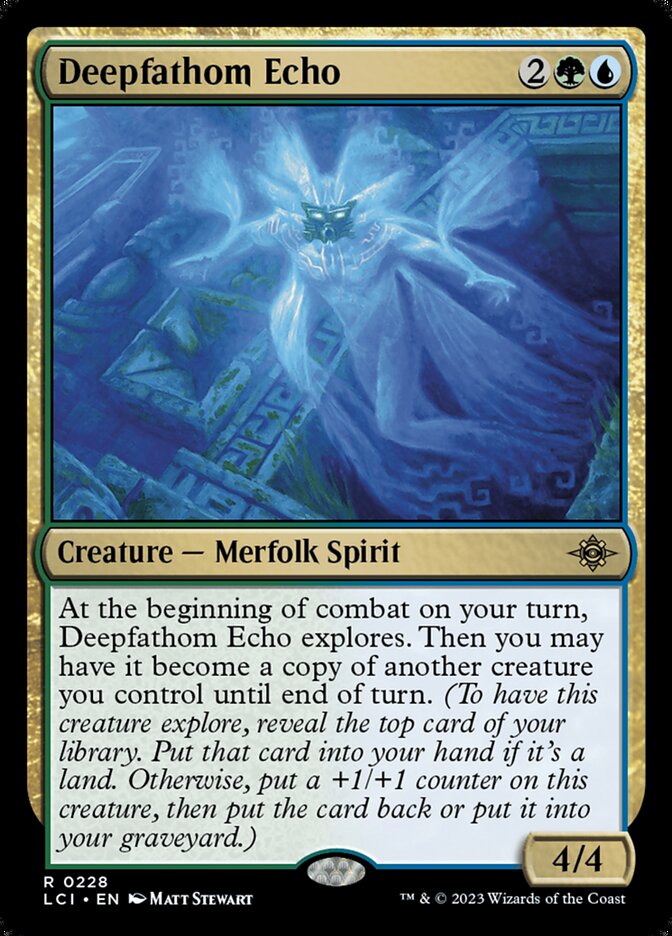
Explore every turn on a 4-mana 4/4 that also can become the best creature in play while doing so. What’s not to love?
Threefold Thunderhulk
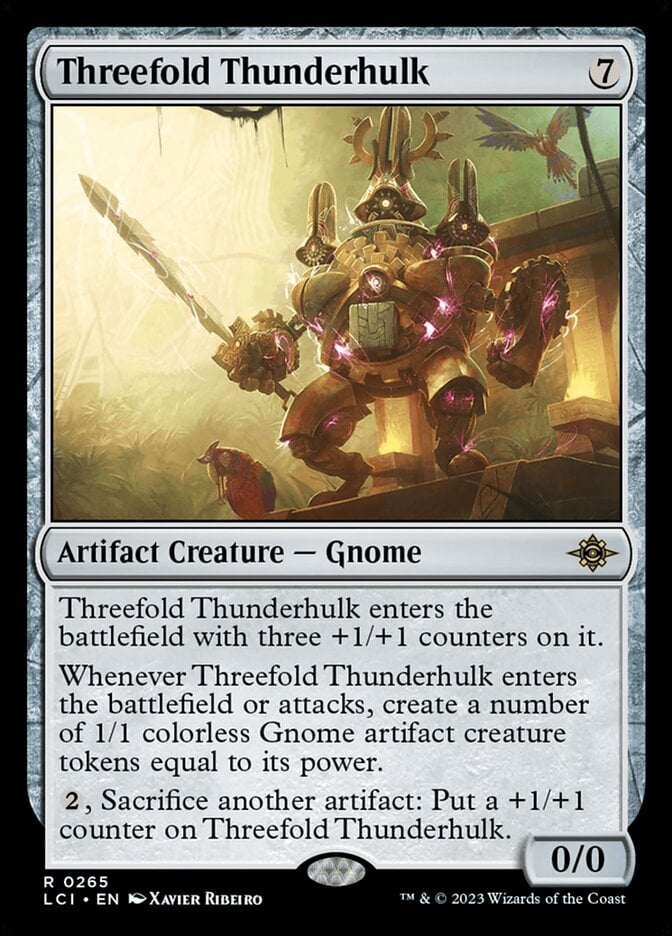
Myr Battlesphere comparisons are a good sign that a card is a bomb in Limited! This isn’t quite as good as the original, but well worth getting to 7 mana for.
Other Stuff to Note
The above covers a lot of ground in the set, so here I just wanted to touch on some larger concepts relevant to The Lost Caverns of Ixalan.
Splashing
Splashing is going to be more awkward than it was in the last set (Wilds of Eldraine), but significantly easier than in a set like The Brothers’ War. Your primary tools to splash are:
Compass Gnome
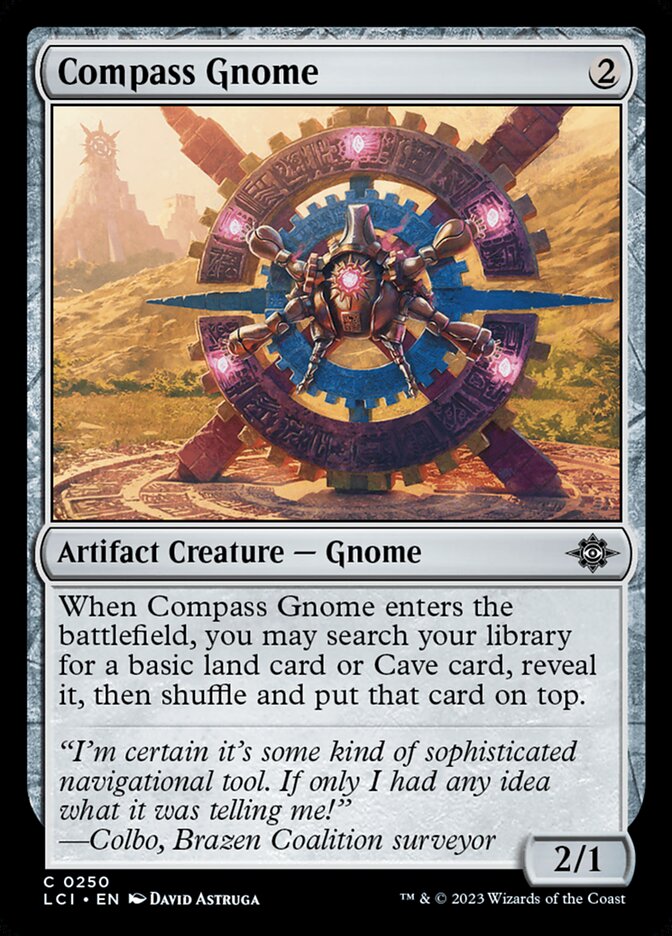
Campus Guide was decent, so I’d expect similar performance from this one. Playable anywhere but better when you have caves/splashes to find.
Promising Vein
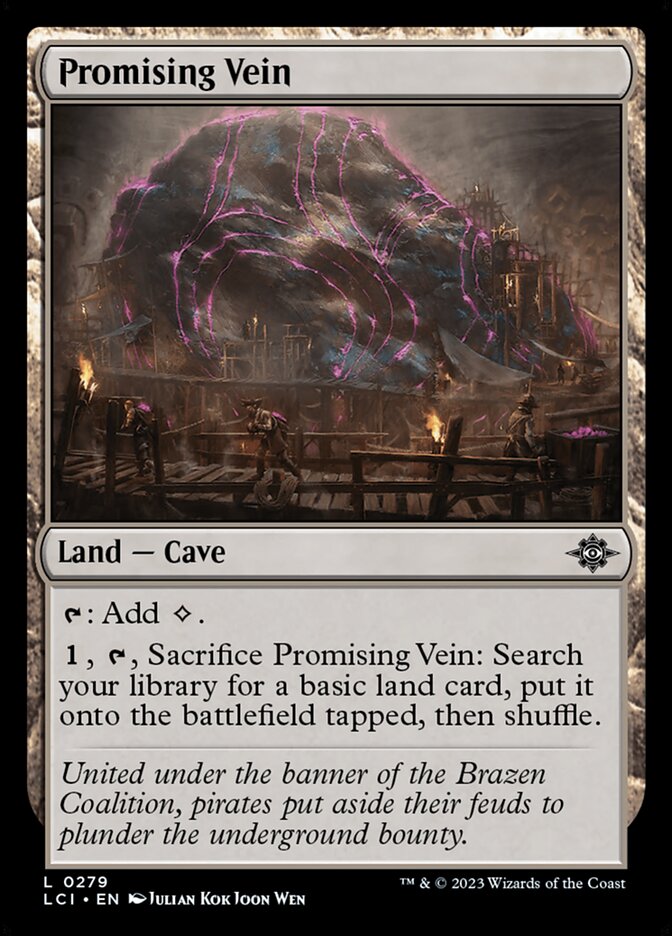
Good for simple splashes and getting some free descend value.
Captivating Cave
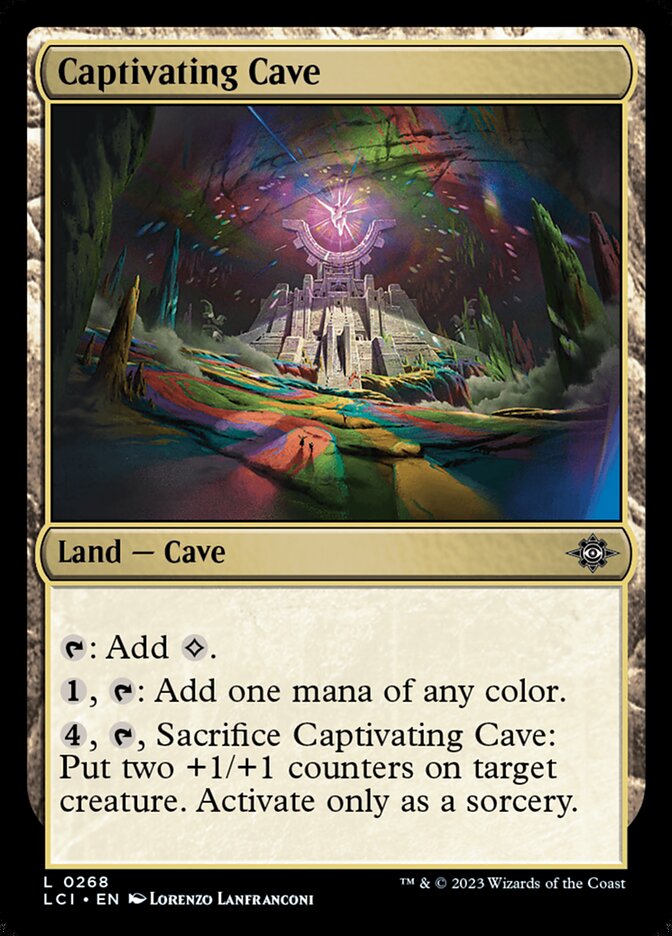
Another decent land fixer, though probably a bit worse than Promising Vein. The extra late game upside is nice though.
Buried Treasure
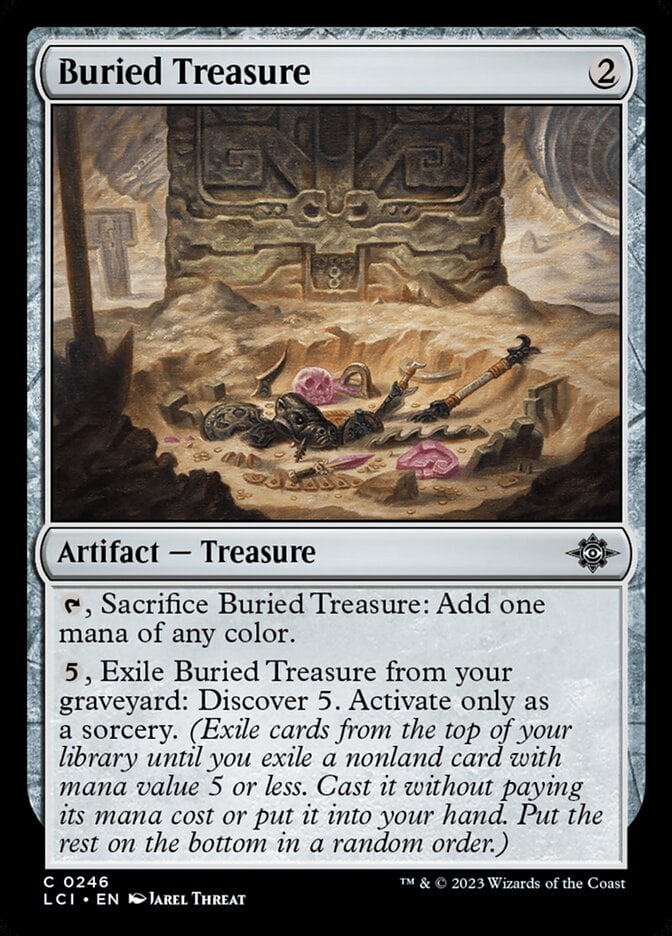
I’ll be interested to play with this one, though I’m not quite sure if it will be good or not. This lets you spend a card early for temporary acceleration/descend, then get back the card later in the form of a slow/unreliable discover 5. You can also mill/discard this for value.
Poison Dart Frog

Covered this earlier but just a reminder that the frog is great, and you should play it!
Pludering Pirate

Also covered earlier, another bread-and-butter creature that splashes bombs well.
Cycling Dinosaurs
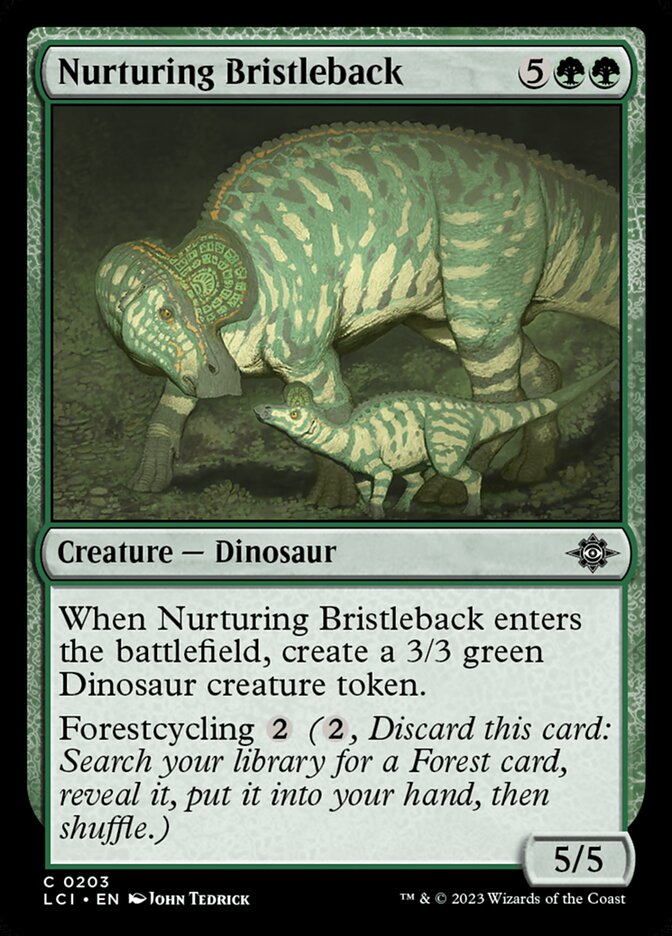
One cycle of commons that I haven't mentioned yet are the five Dinosaurs with basic landcycling. These are solid curve toppers that can help make your deck more consistent. All of them are double pipped though, so I wouldn't recommend using them to do minor splashes. They are also all great with Defossilize if you have it.
If you don’t have those or a handful of uncommons (mainly Careening Mine Cart and Scampering Surveyor), you’re probably best off sticking to two colors. Most splashes should be for just 1-2 cards in a 3rd color. If you want to try playing more than three colors, give Sunbird Standard a try!
Stuff to Play Around
This is a non-exhaustive list of things you can care about in games of The Lost Caverns of Ixalan:
- Specific removal spells from whatever colors your opponent is on (i.e. “What if they have Petrify?)
- Relevant combat tricks/instant speed removal spells, particularly dangerous conditional ones like Quicksand Whirlpool.
- Sweepers, if you can afford to. The four that your opponent could have are Malicious Eclipse, Calamitous Cave-In, Unstable Glyphbridge, and Terror Tide,
- Graveyard hate. Kutzil's Flanker is the most terrifying one, but there’s also Digsite Conservator, Disruptor Wanderglyph, and Pit of Offerings. Because descend is usually a bonus, these cards are rarely “gg”, but should still be effective against your average Dimir/Golgari deck.
- Using your graveyard carefully is important in this set. You don’t want to be the person at prerelease who needlessly crafts using their 4th permanent!
I don’t have any exhaustive plans for sideboarding yet, but I’d expect cards like Cosmium Blast, Out of Air, Unlucky Drop, and Another Chance to vary in quality by matchup. Standard commentary about boarding in/out situational cards like Over the Edge also applies. Another thing you can do in this set is to go towards slow/grindy effects like Ancestral Reminiscence and Walk with the Ancestors if you think you can get away with it.
Seven Steps for Sealed Success!
- Open your pool and sort your cards by rarity/color. Identify any exceptional cards like bombs, multicolor cards, removal spells, fixing, etc.
- Assess which of your colors is the deepest after removing weak cards (like the ones I mentioned in “Commons to Avoid”).
- Look for synergistic clusters of cards (i.e. Chupacabra Echo + self-mill cards), keeping in mind the 10-major archetypes.
- Start laying out builds that play as many of your good cards/synergies as possible. Use two colors for your baseline, and try to include at least 7 sources for each primary color.
- If you have fixing, consider whether splashing makes sense for your deck. The best cards to splash are usually removal spells, bombs, or sources of card advantage that need only a single pip of mana.
- Iterate your deck over and over, trying to strike the perfect balance between mana curve, card advantage, bombs, removal, etc.
- Settle on a final product, and battle it out! And don’t forget that you can use our Sealed pool generator to practice the set.
Wrap Up

River Herald Guide | Illustration by David Astruga
Whew! And with that, we have gotten far enough into The Lost Caverns of Ixalan that I think I can leave you for now.
I wish you the best of luck with your prerelease(s) this weekend, and hope you experience great success. Make sure to check out the Draftsim Discord for more Magic content and comradery.
Until next time, may your explores always find exactly what you need!
Follow Draftsim for awesome articles and set updates: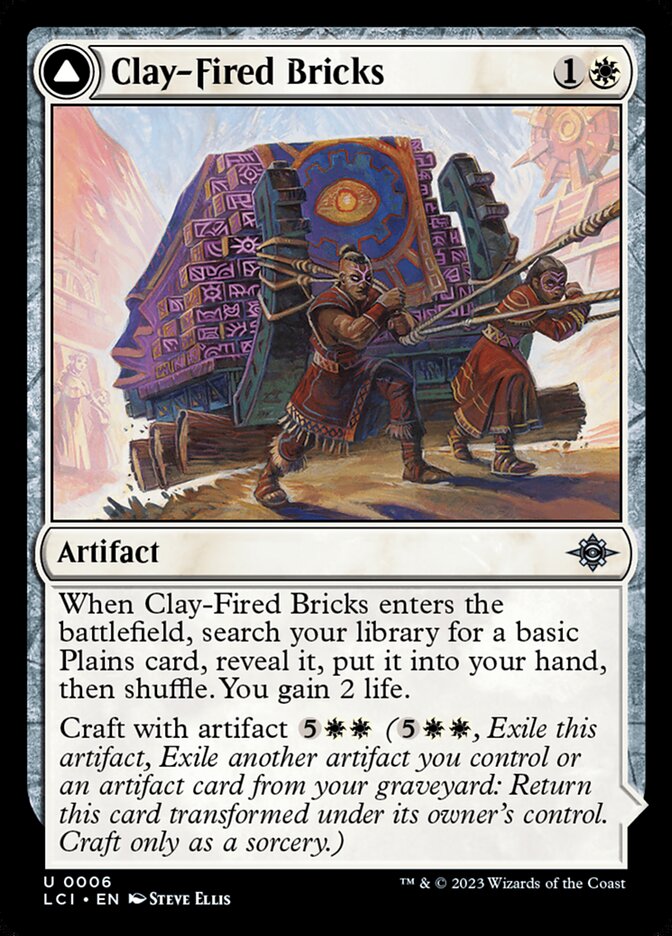


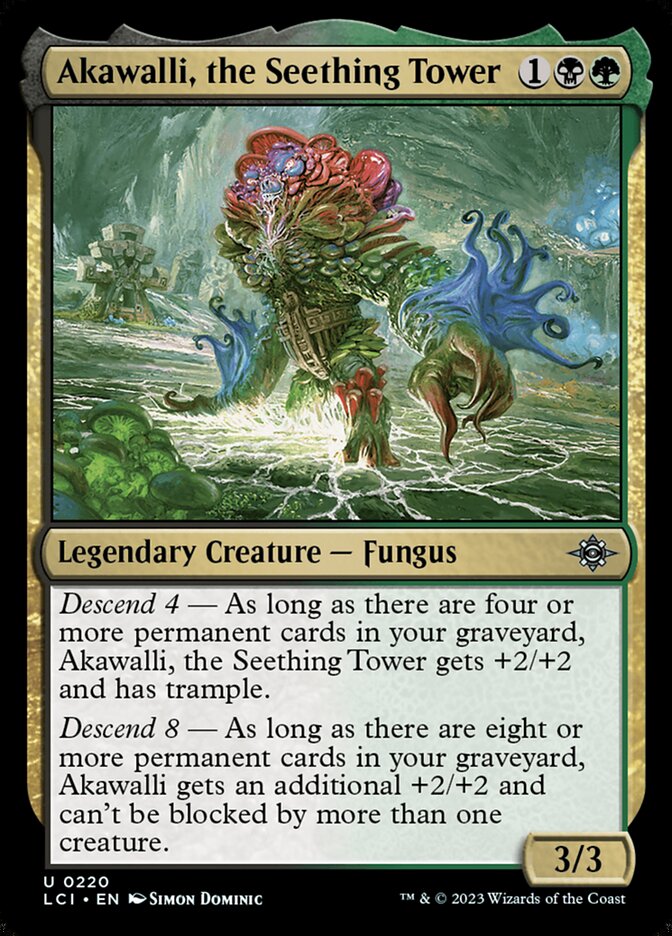
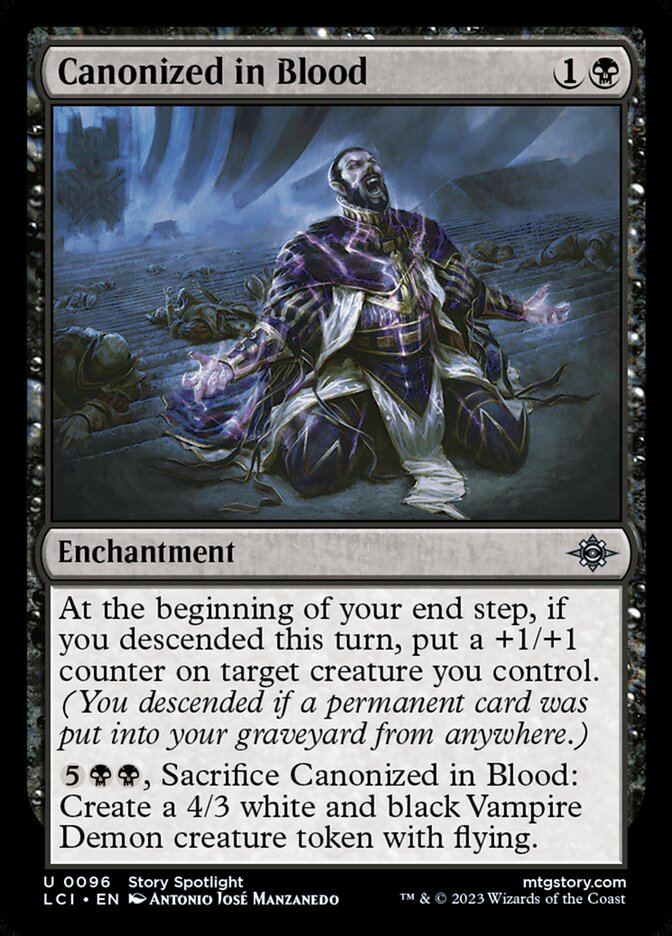
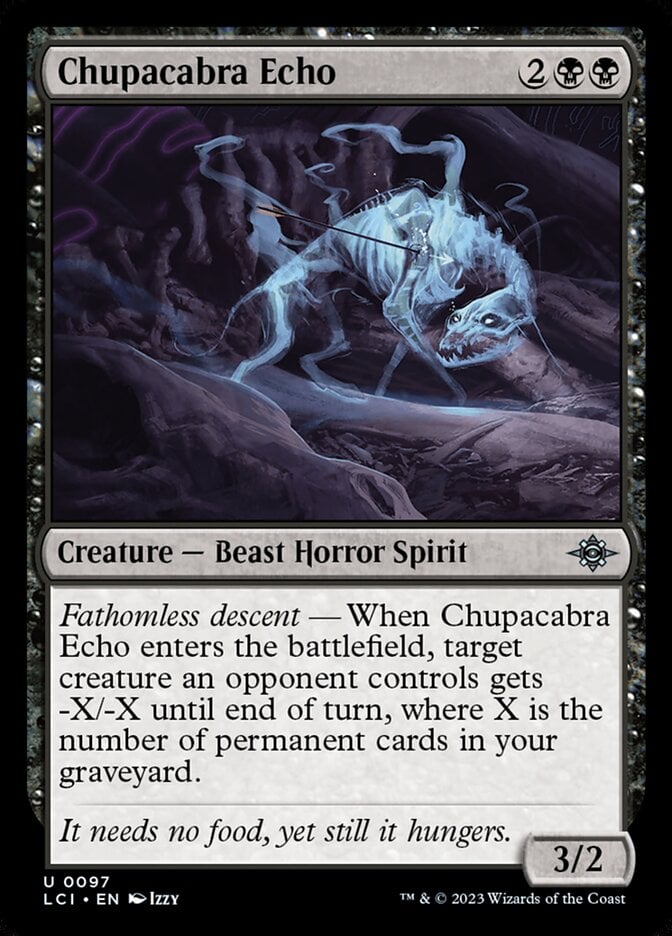

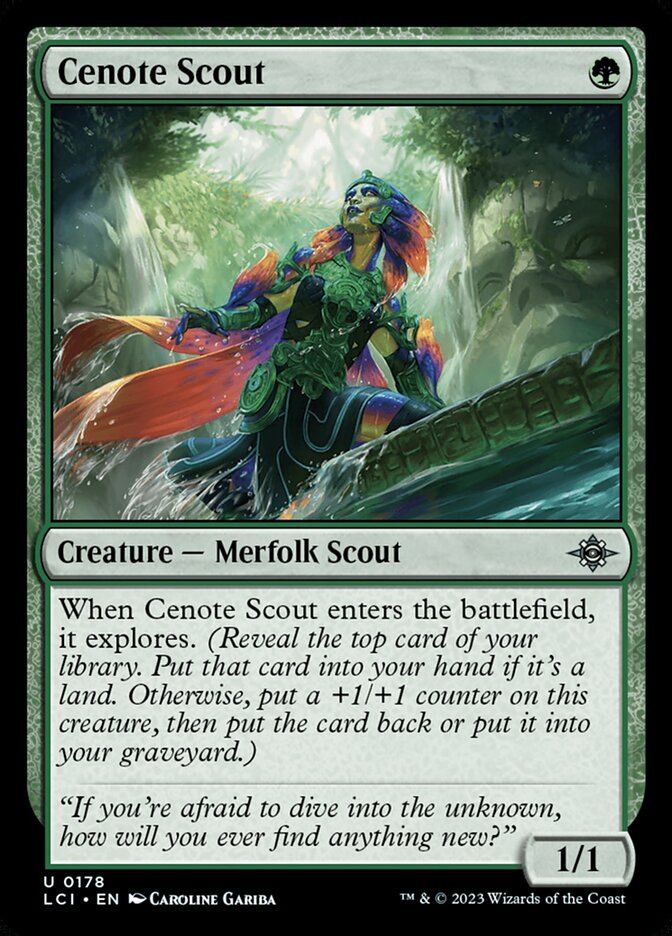

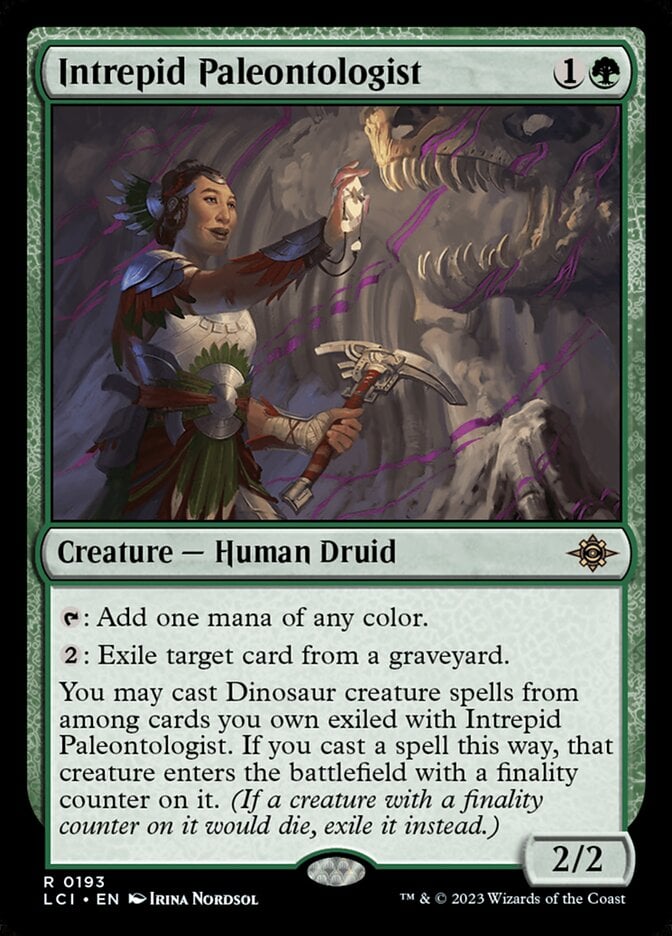
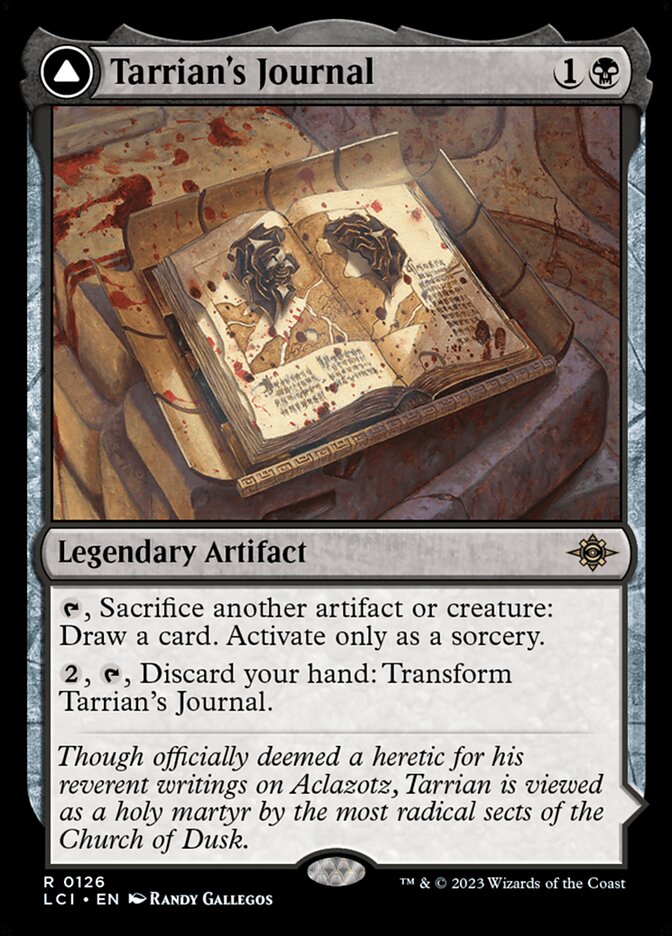
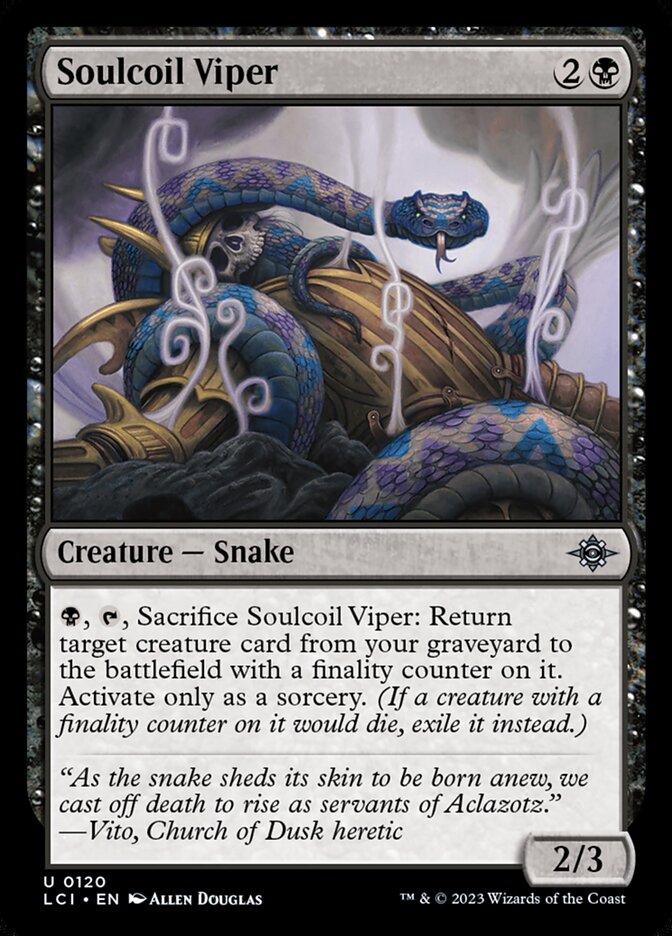
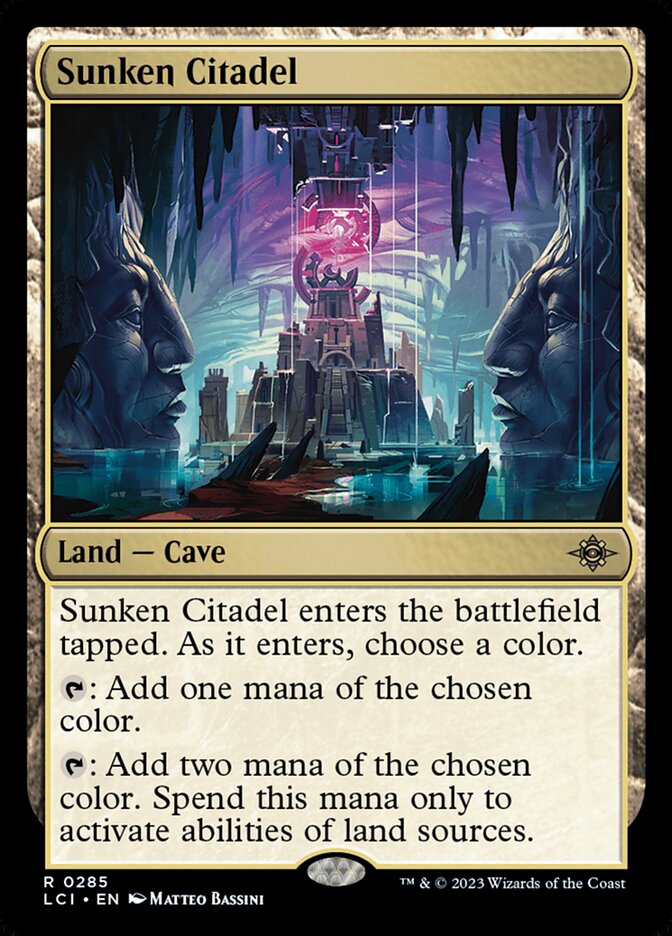
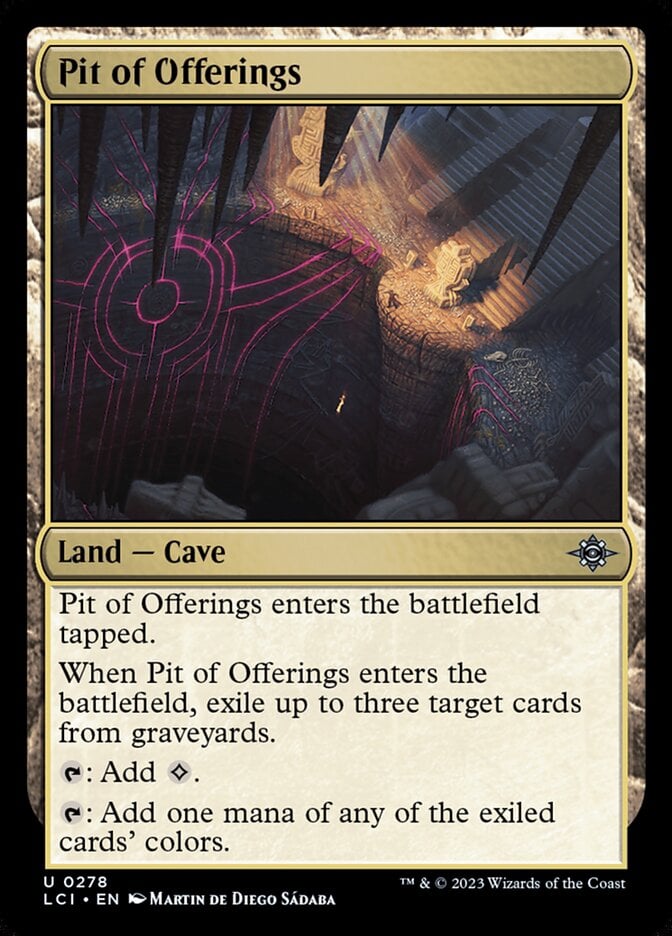
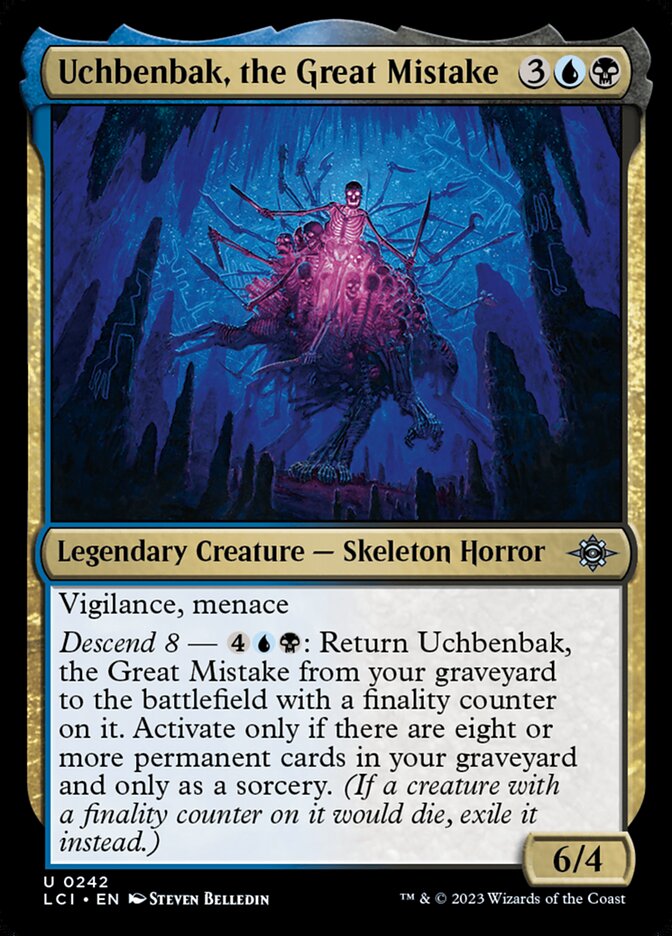
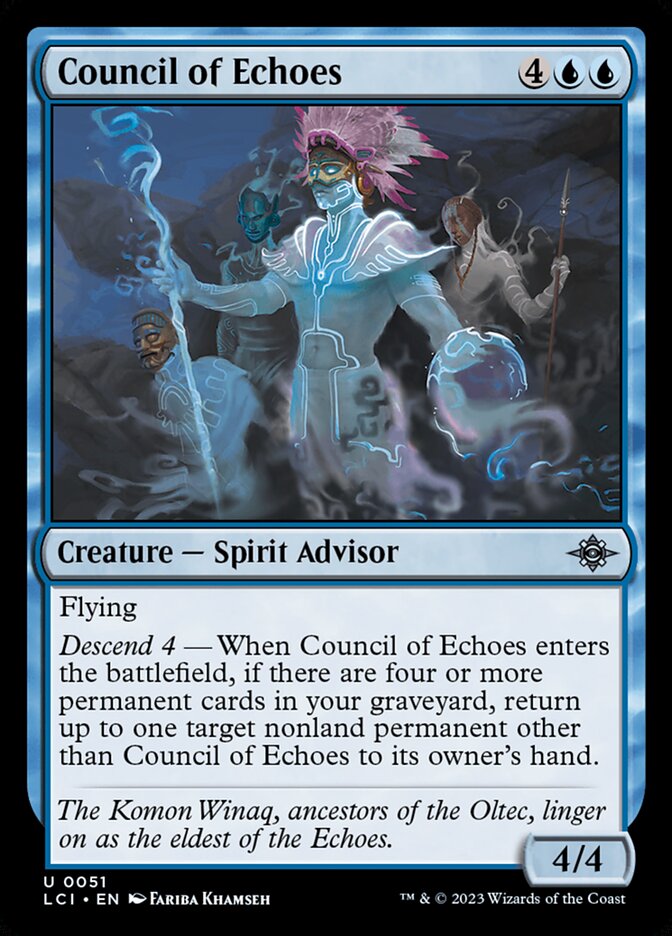
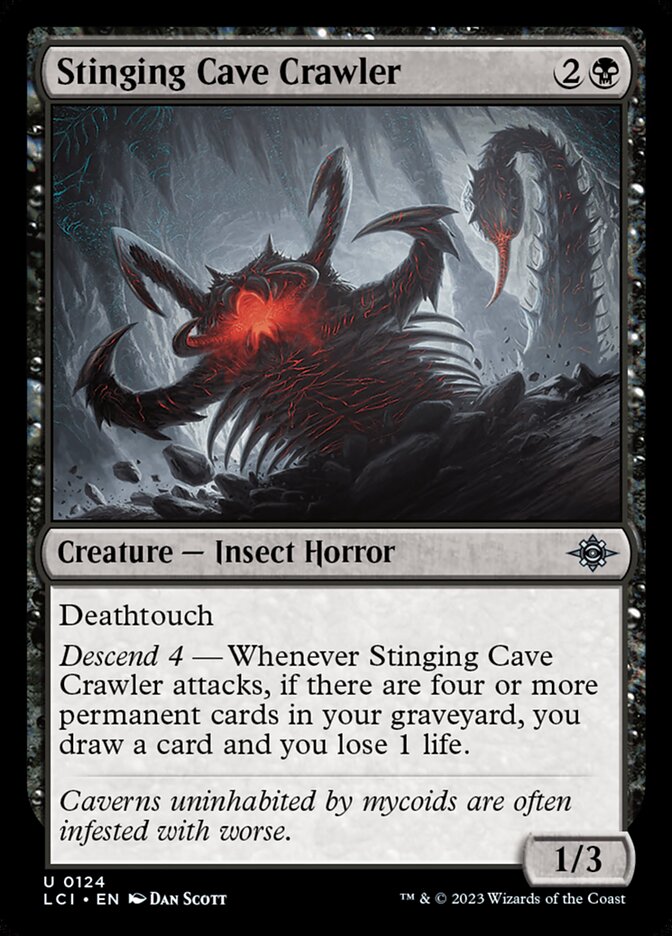
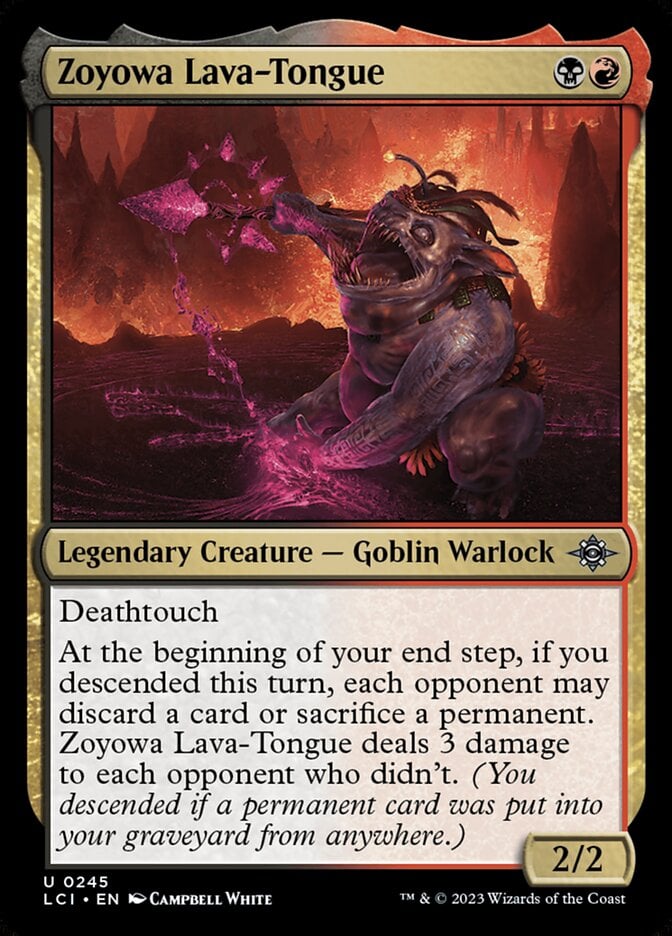
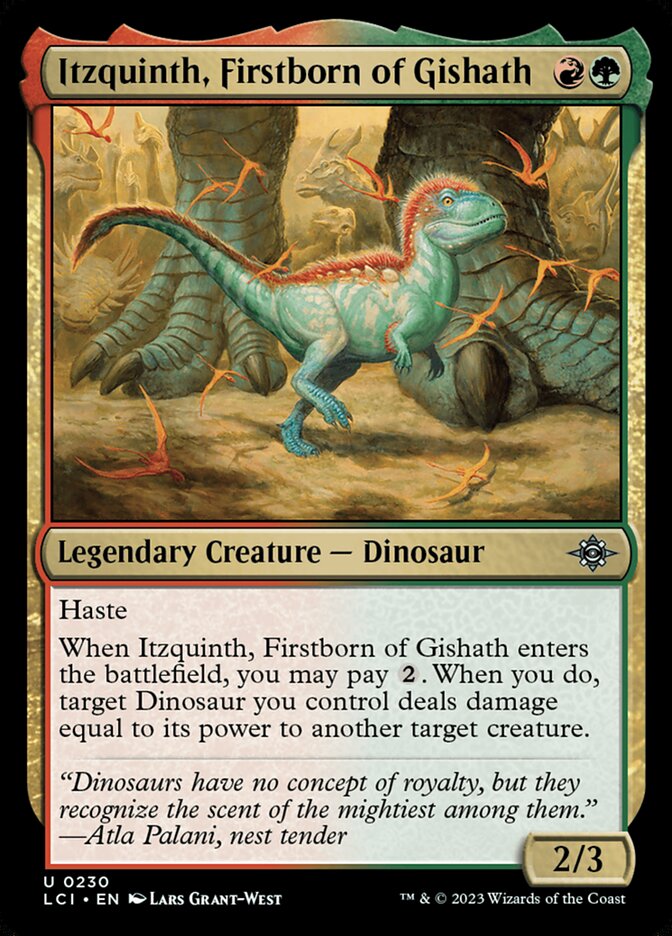
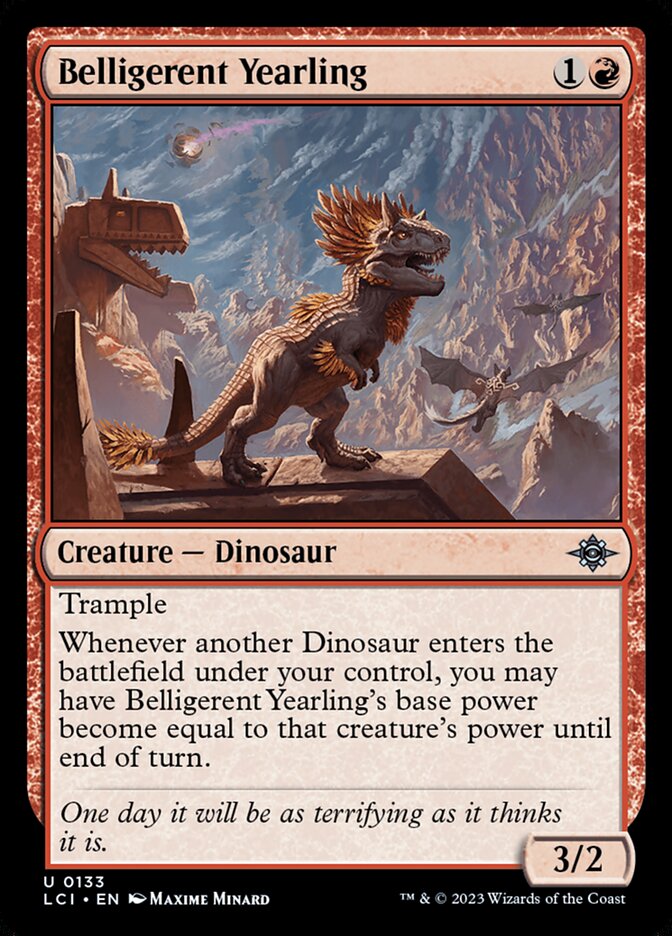
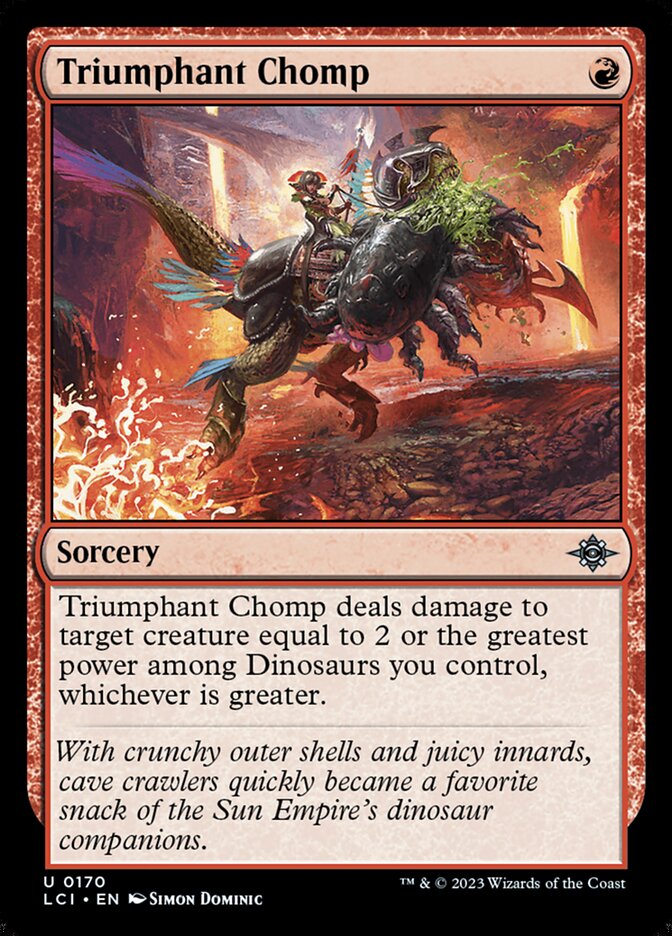
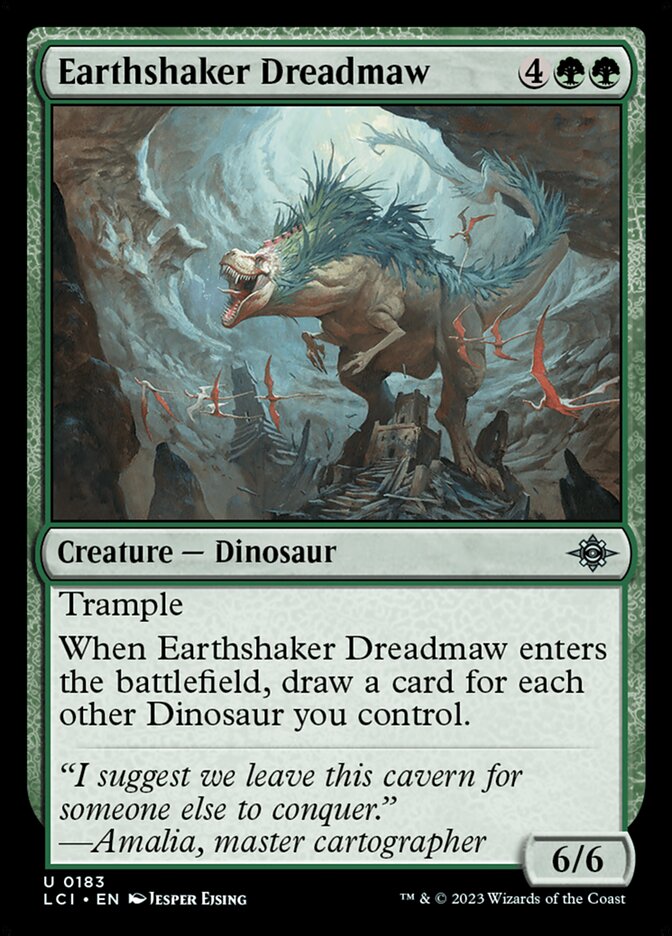
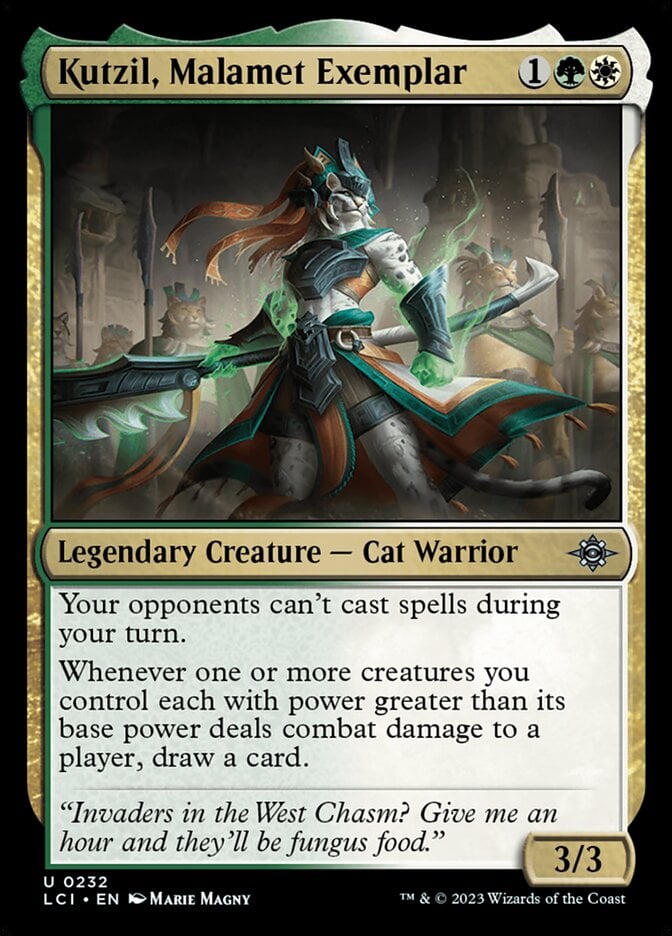
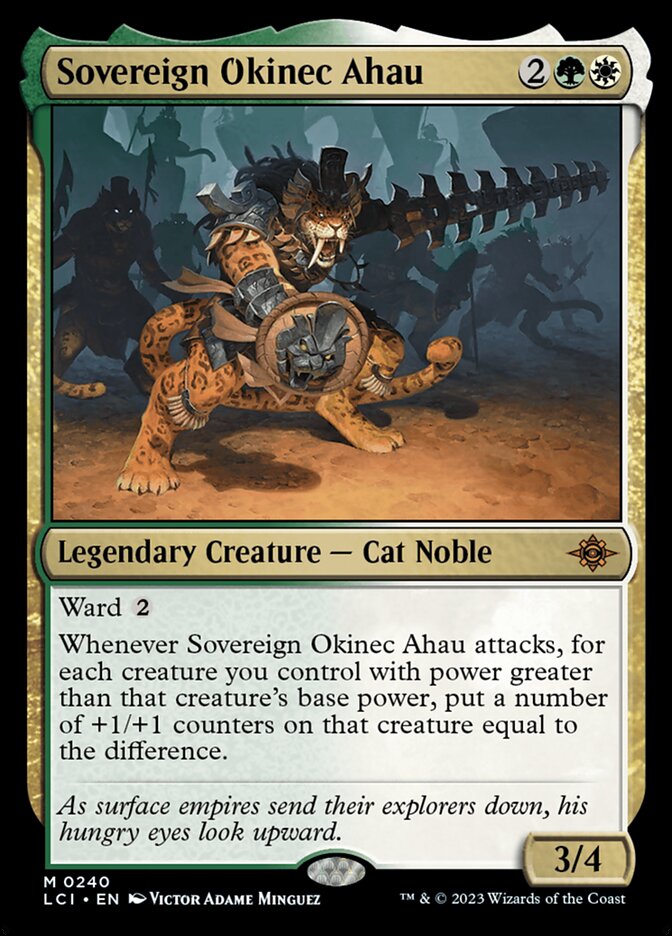
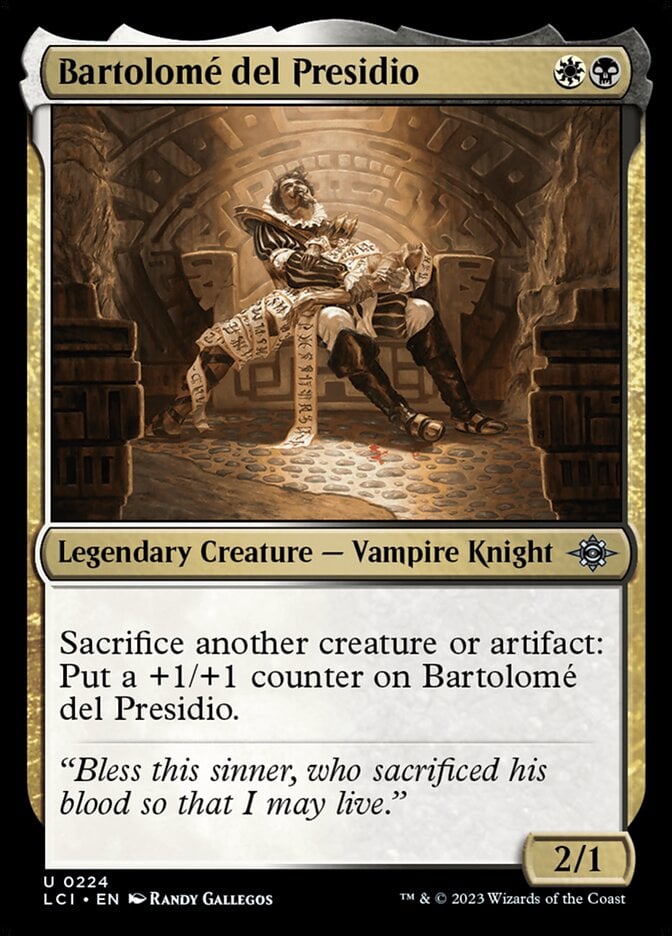
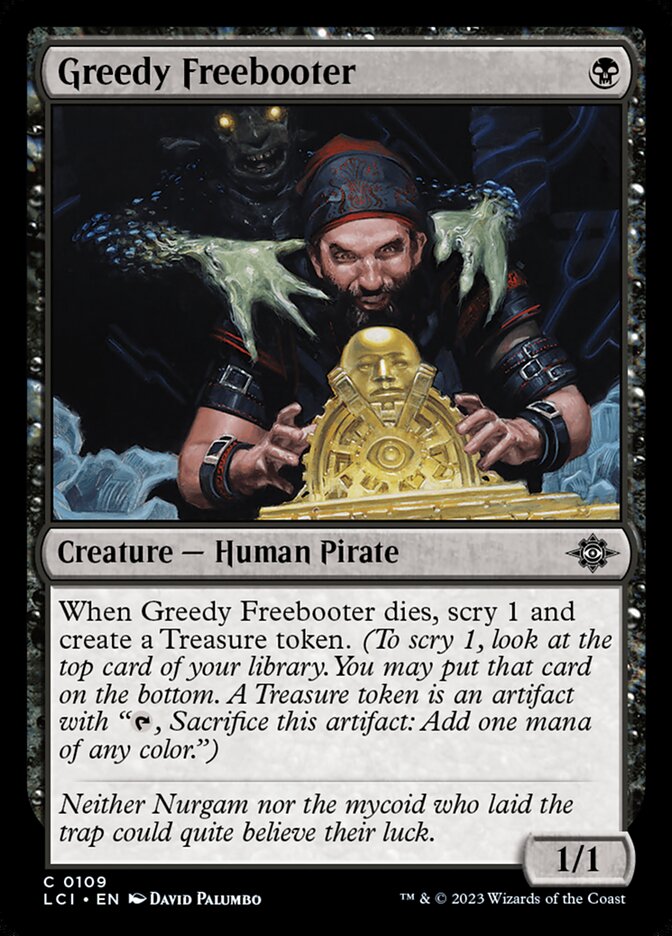
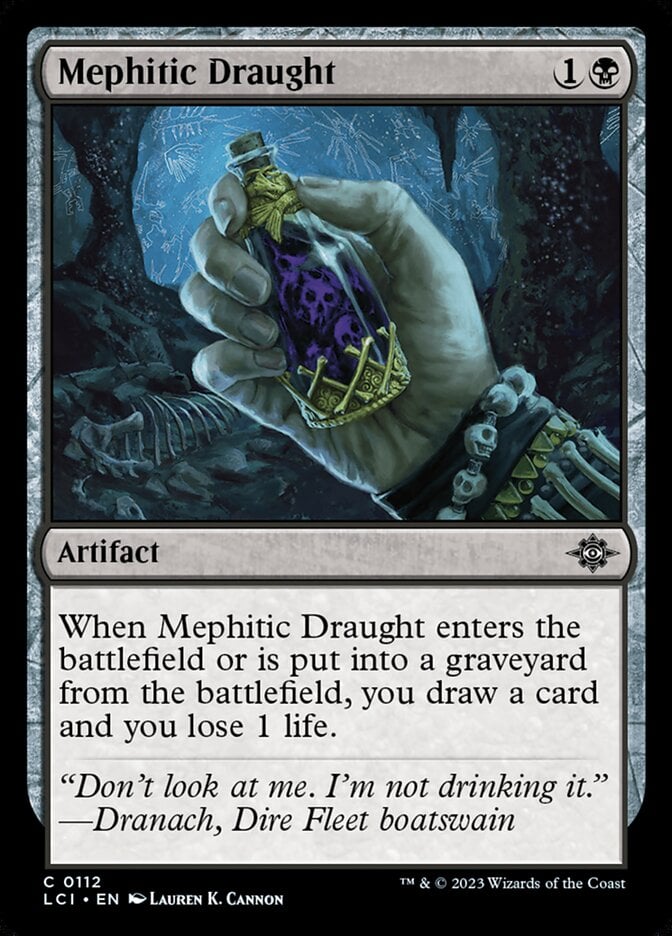


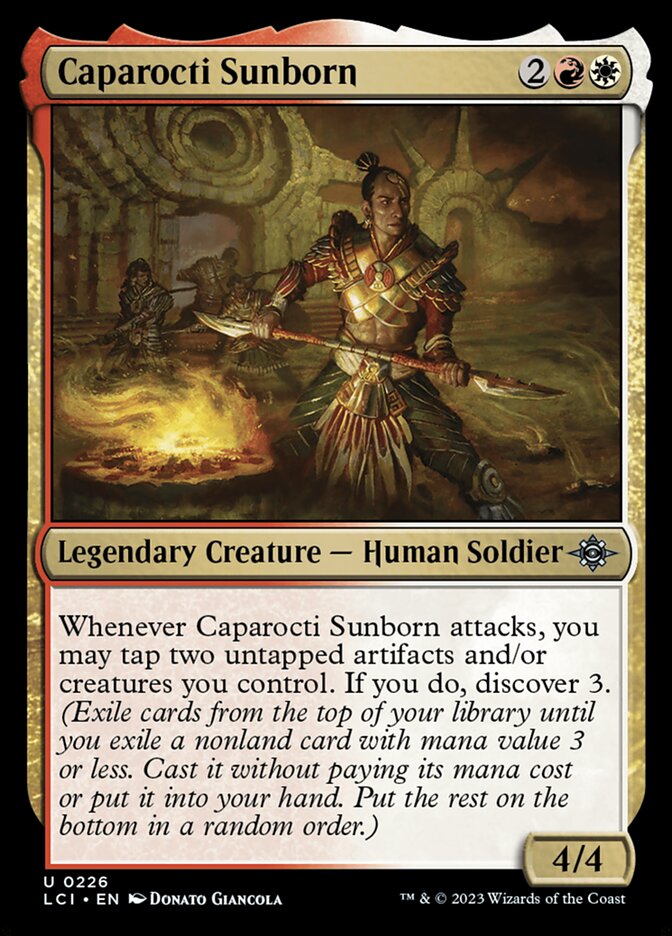
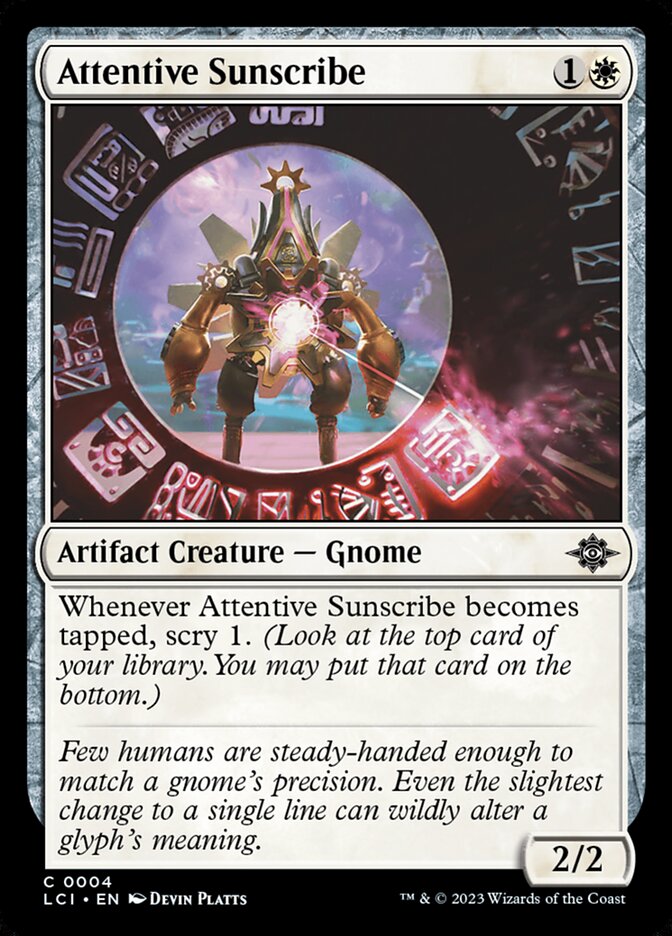

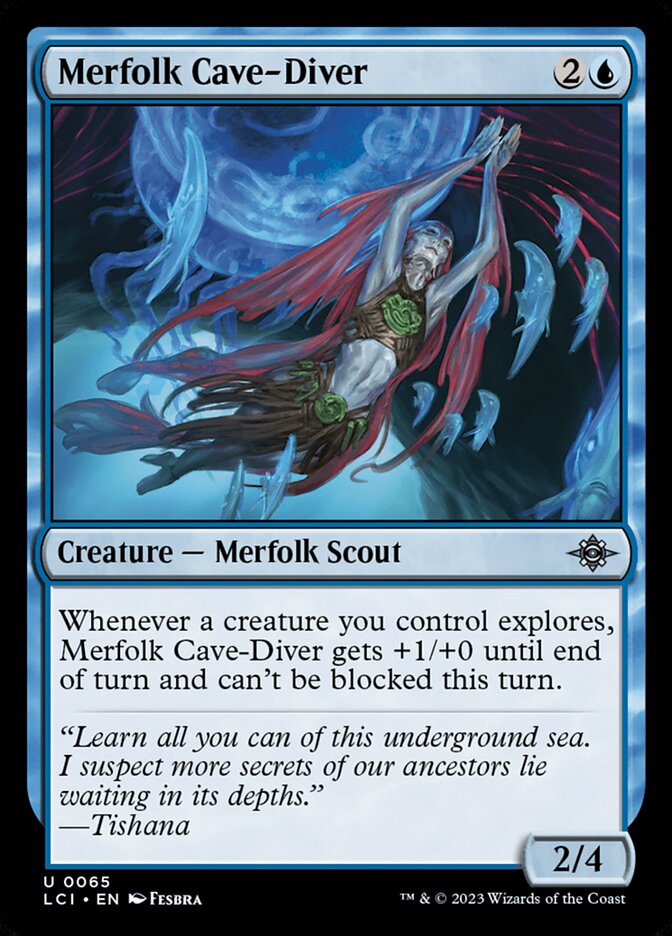
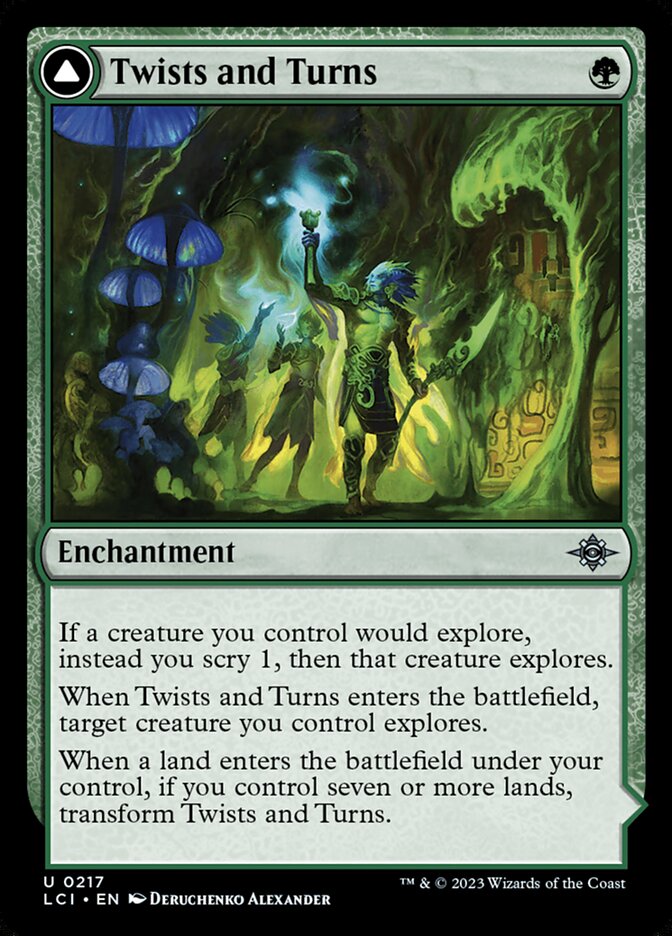
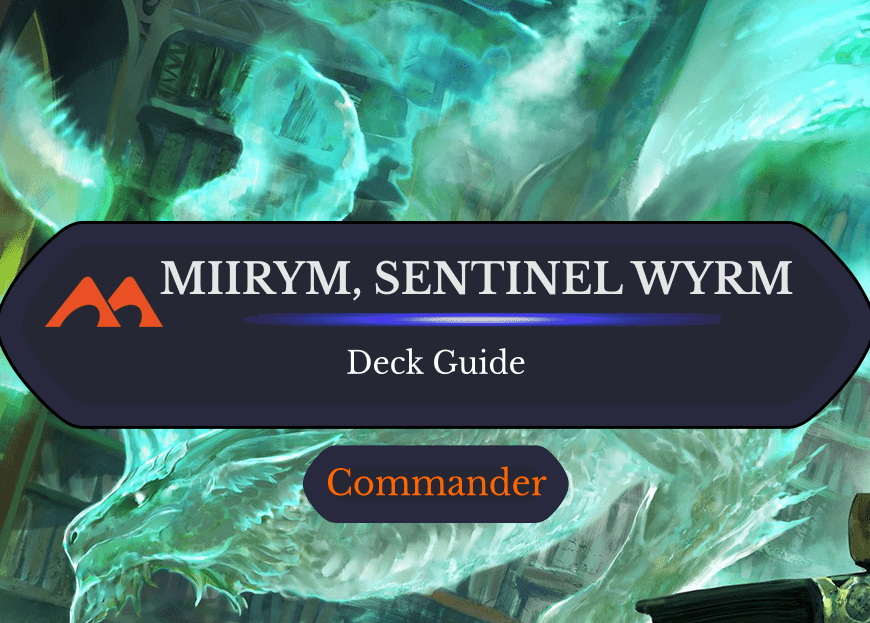
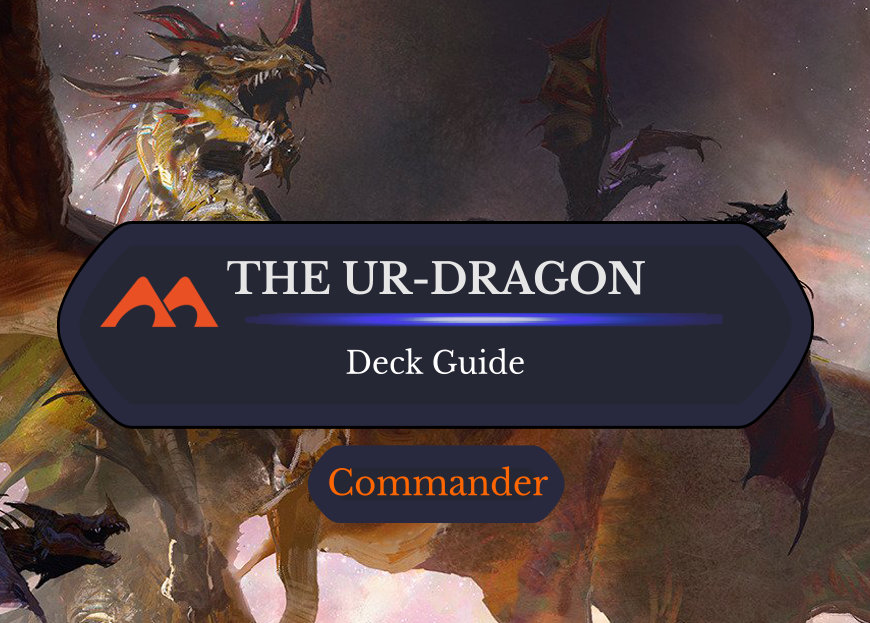
1 Comment
Don’t forget Bringer of the Last Gift for sweepers!
Add Comment